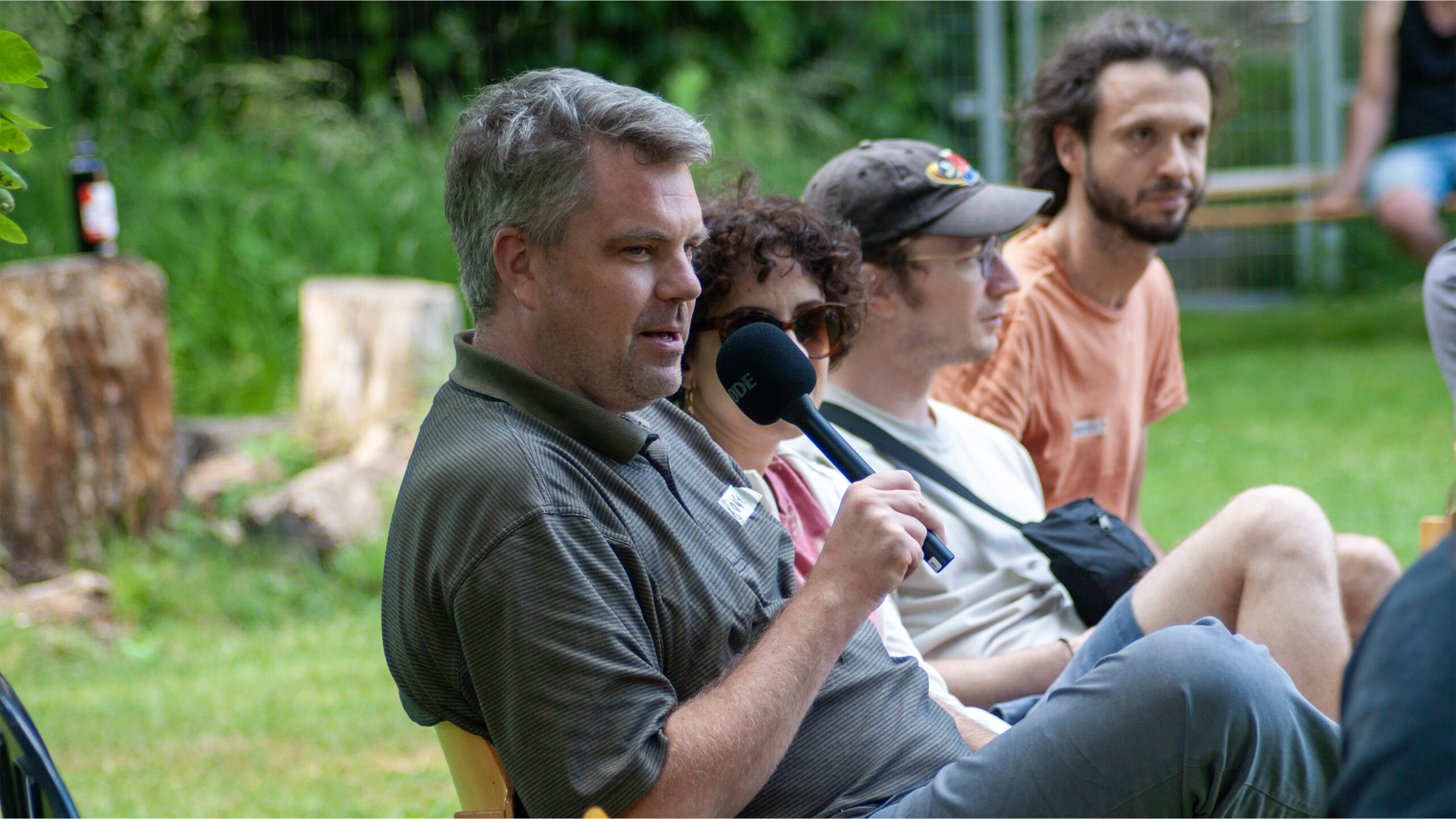
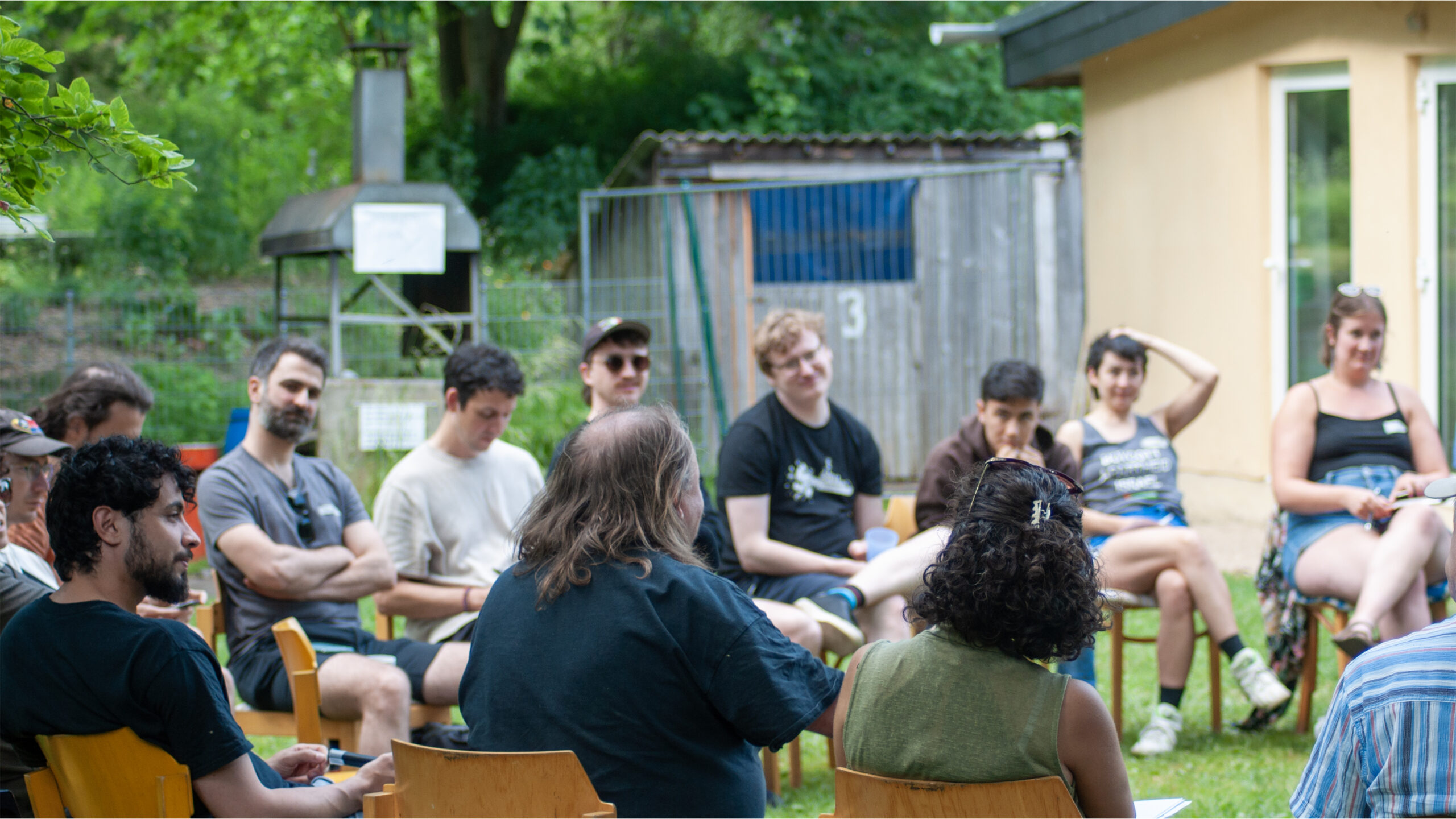

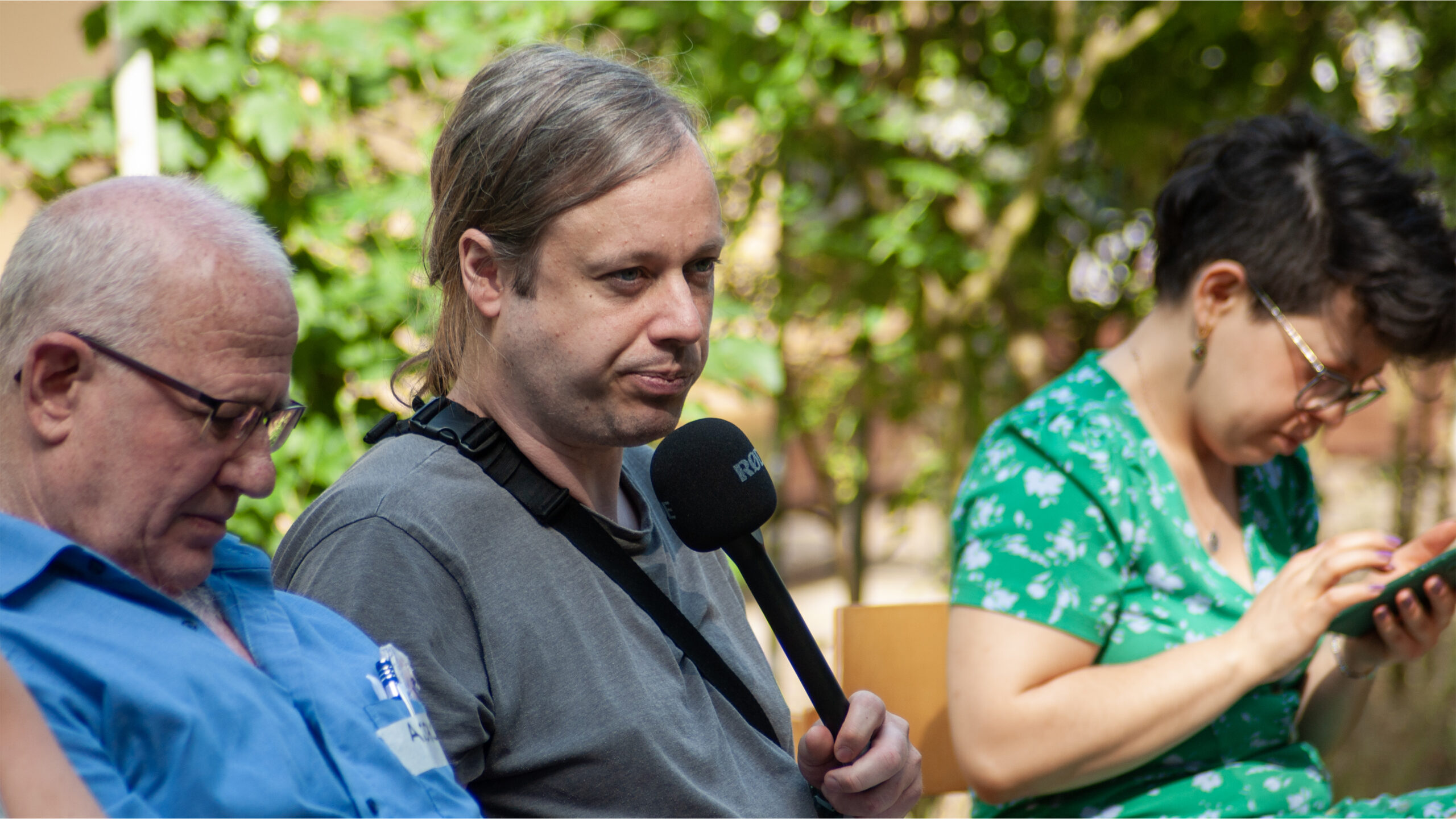

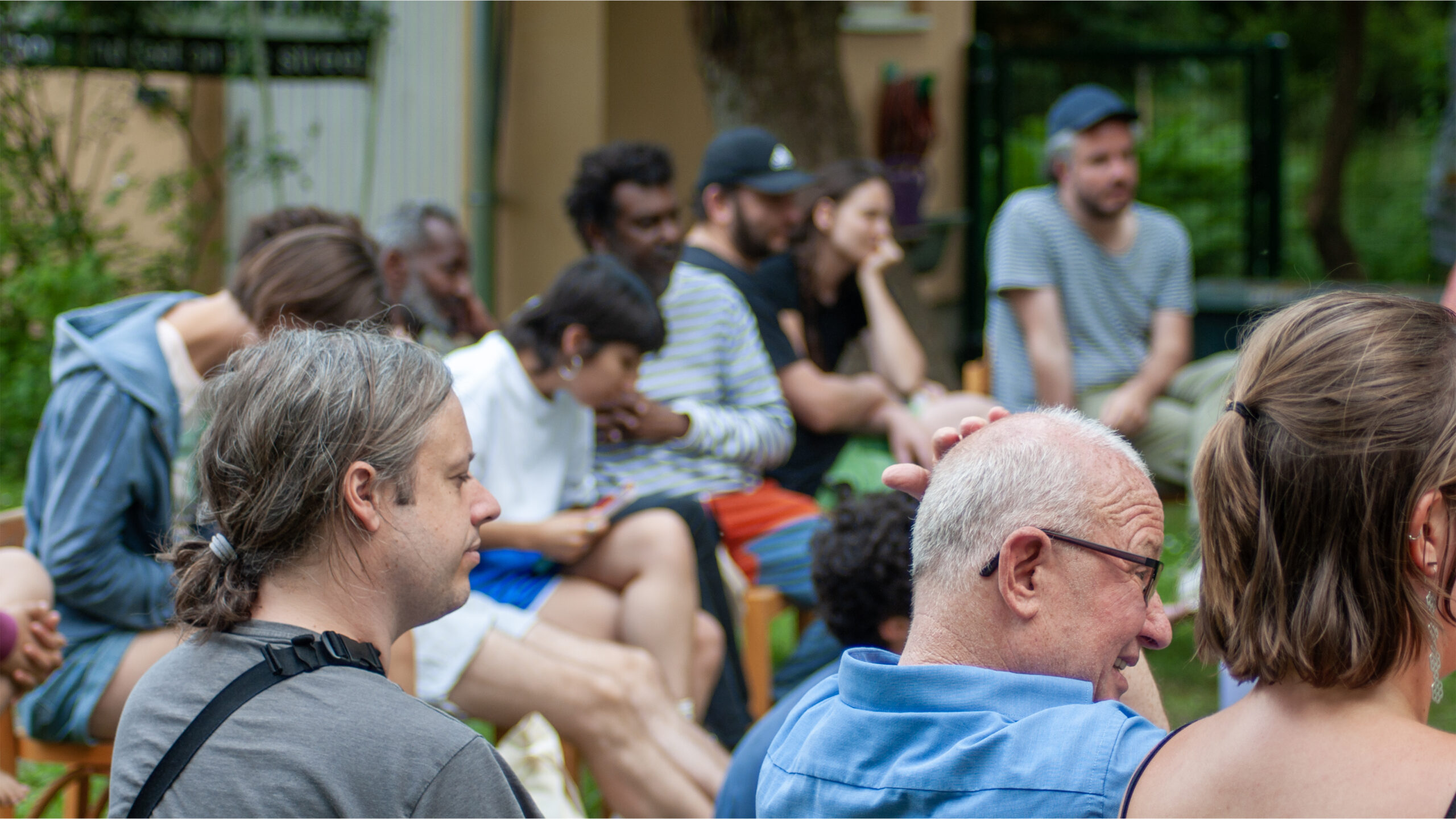
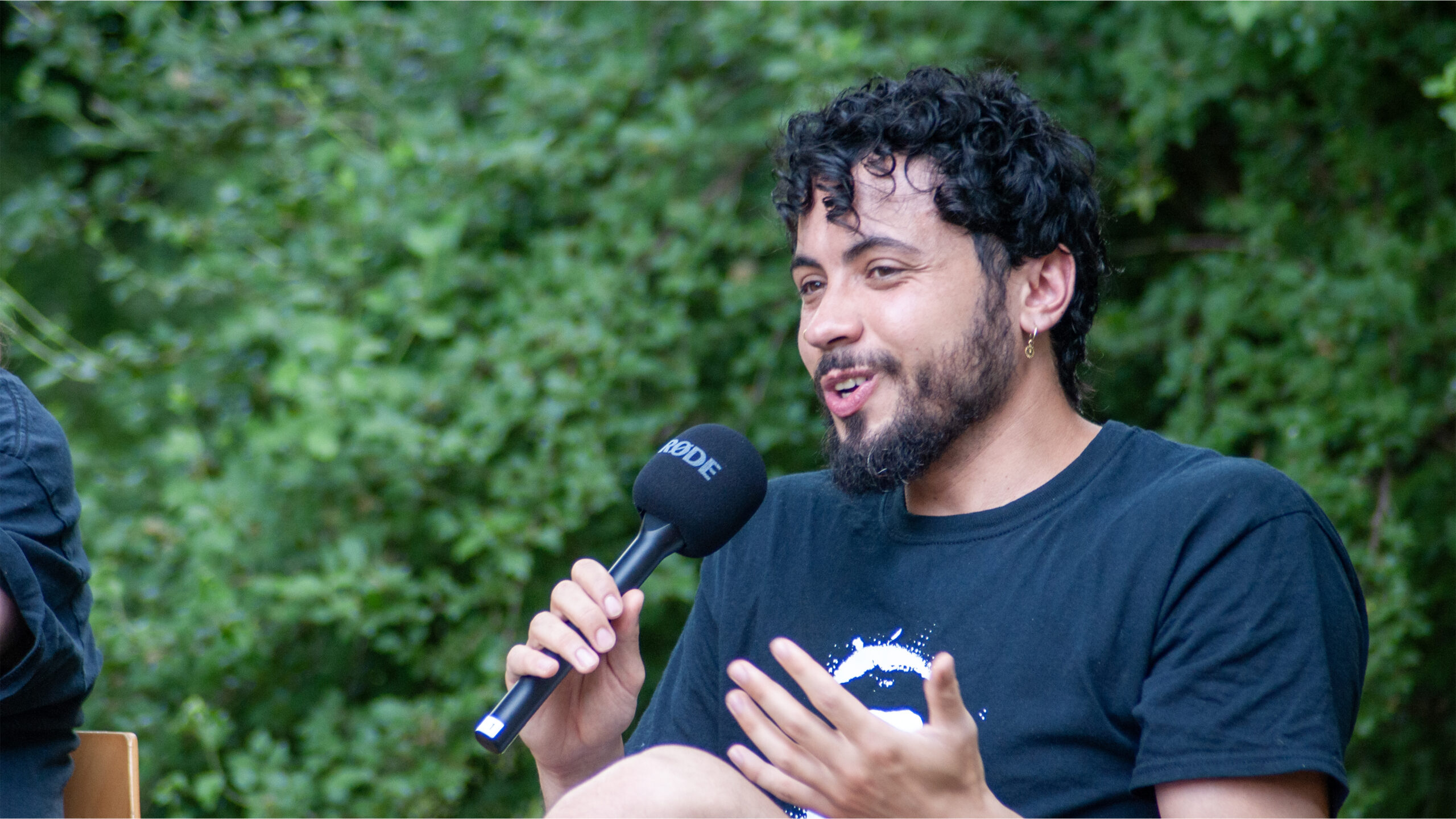

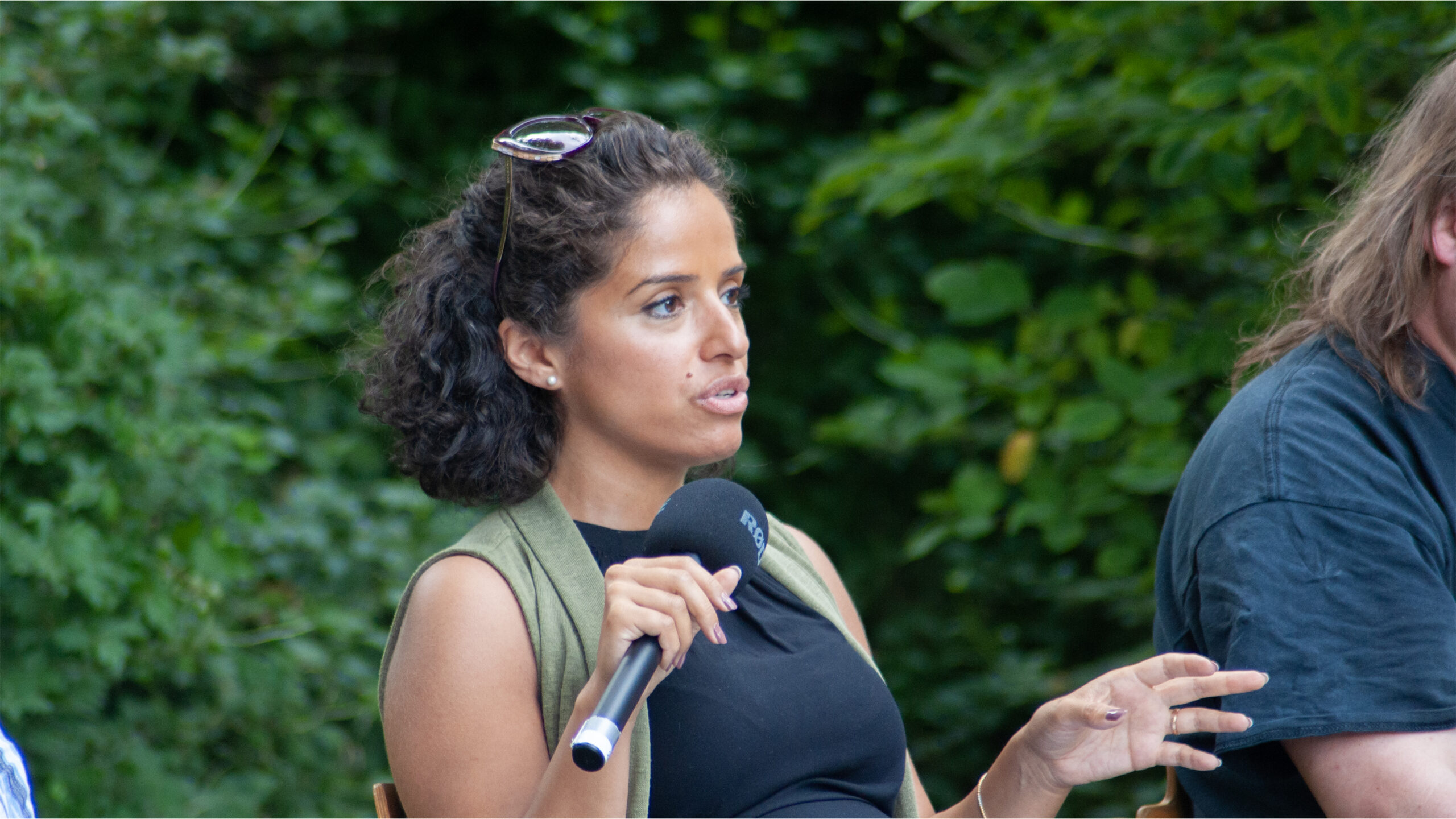


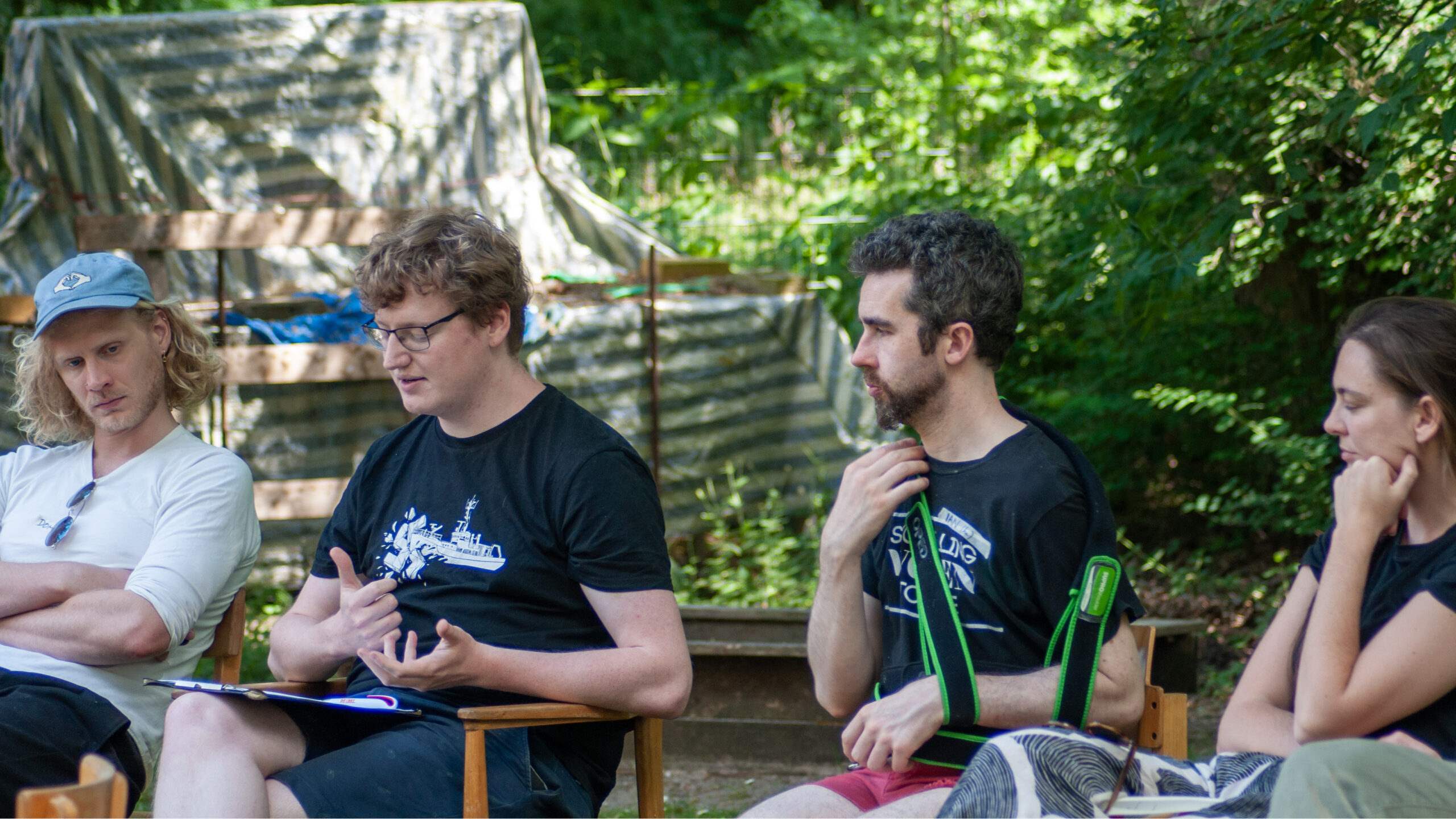

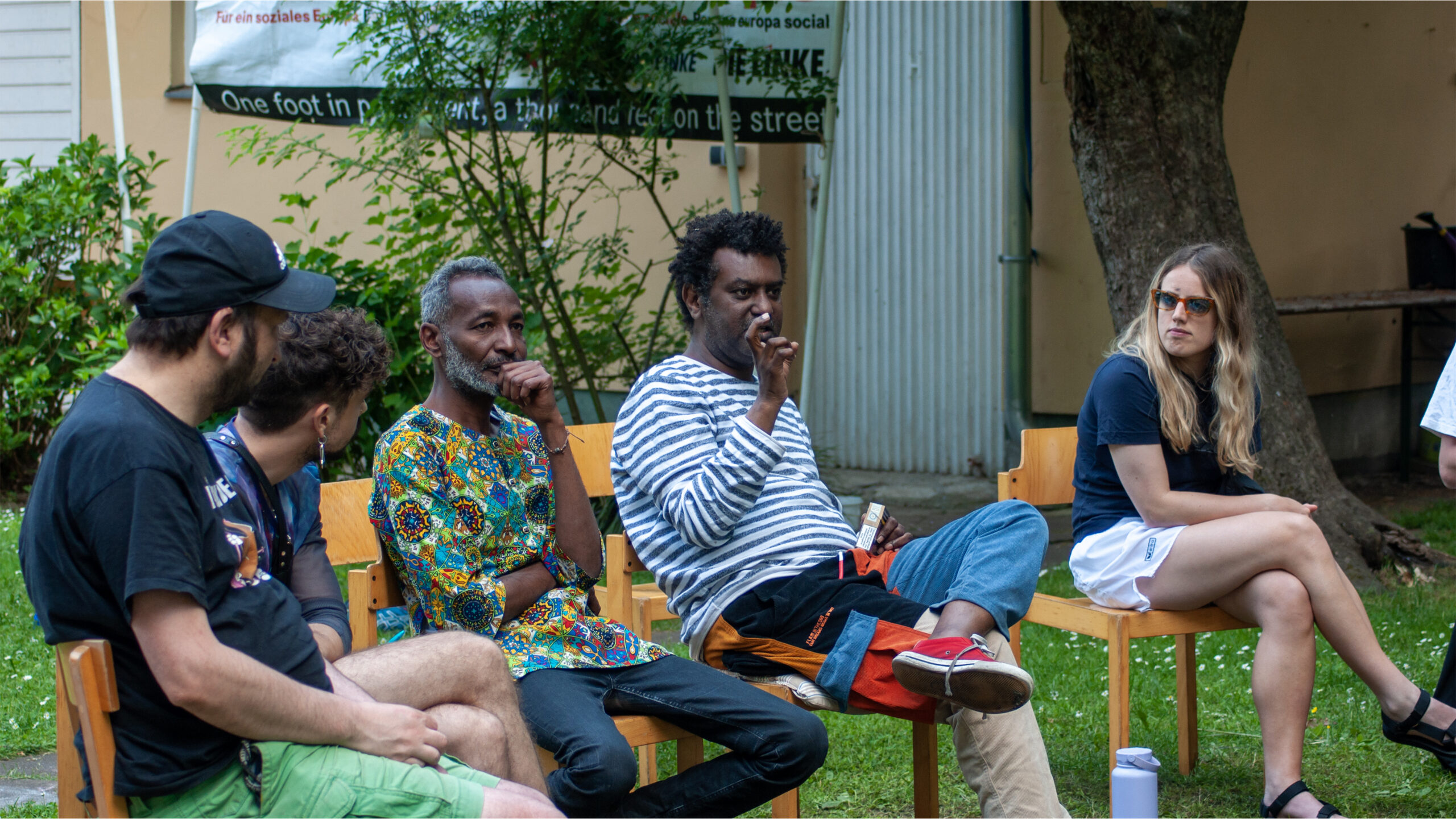
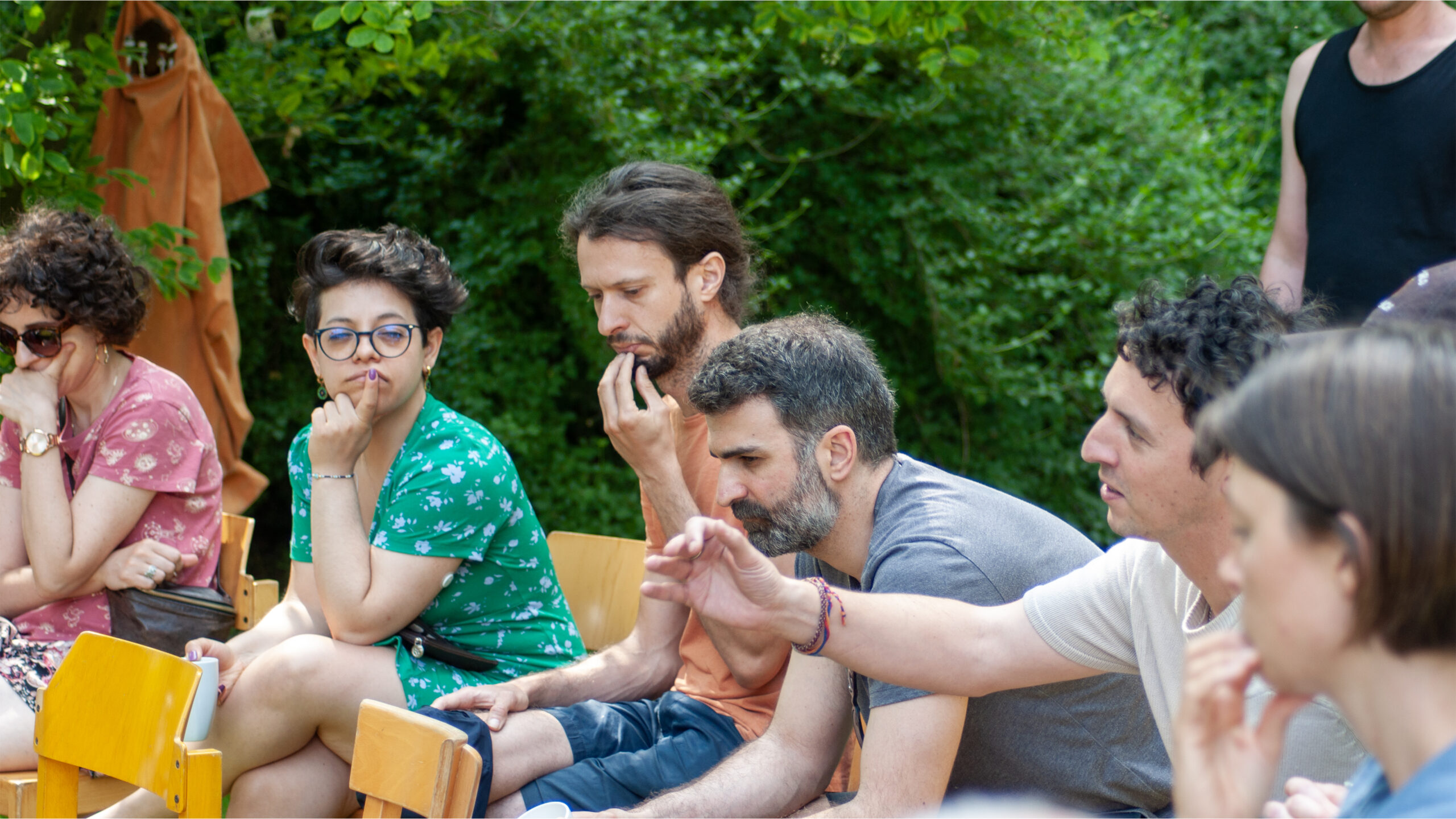
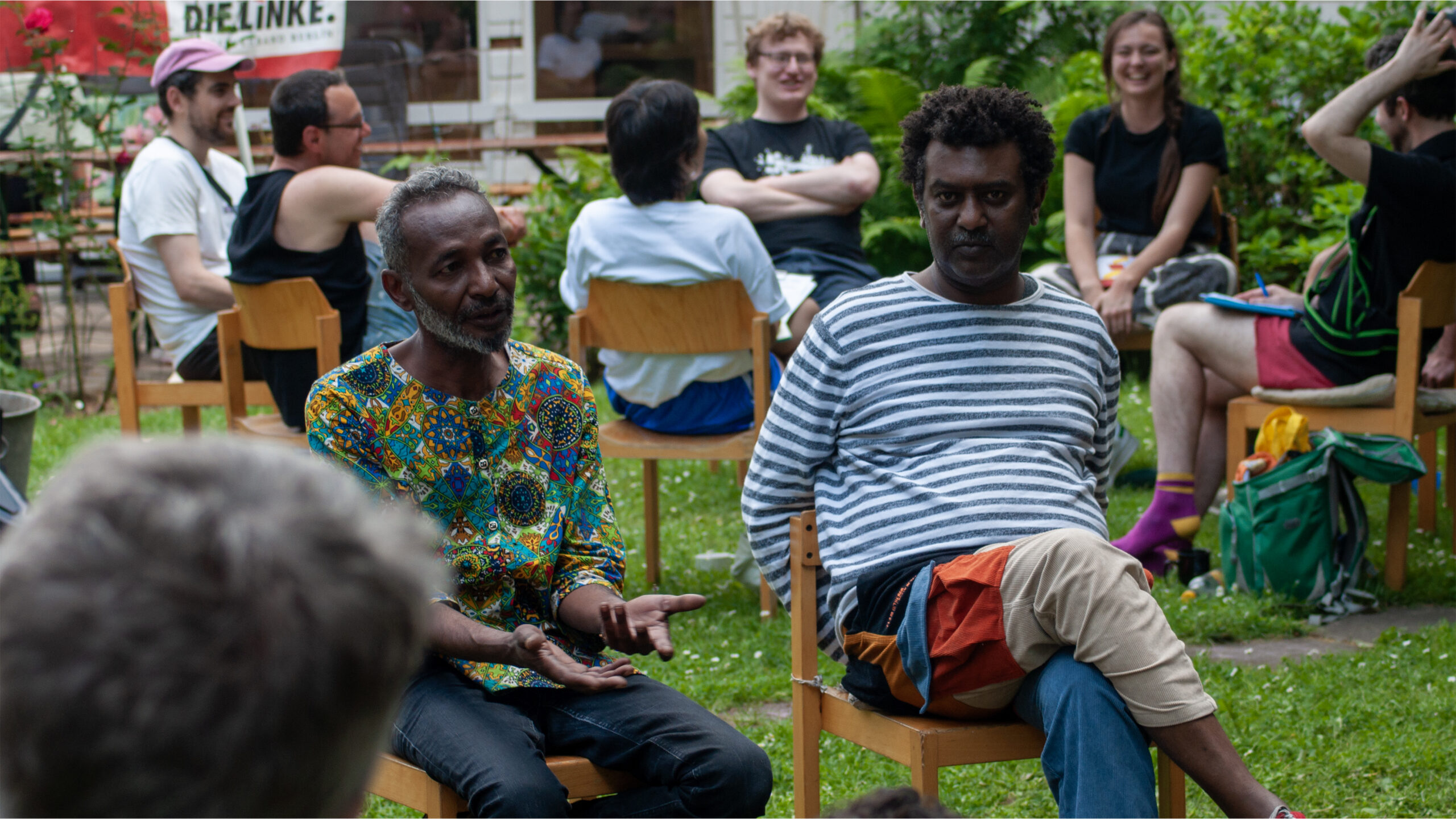
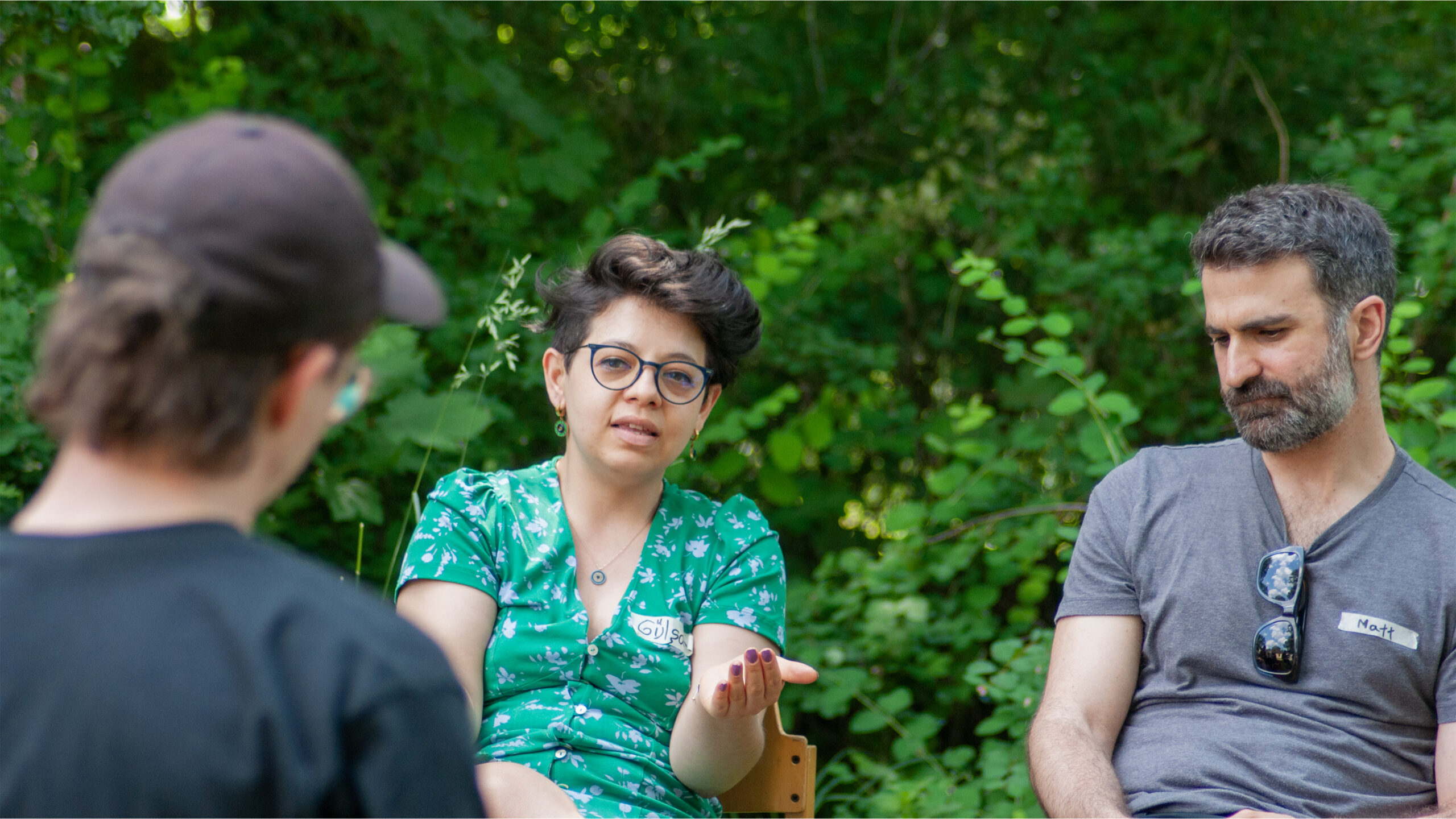

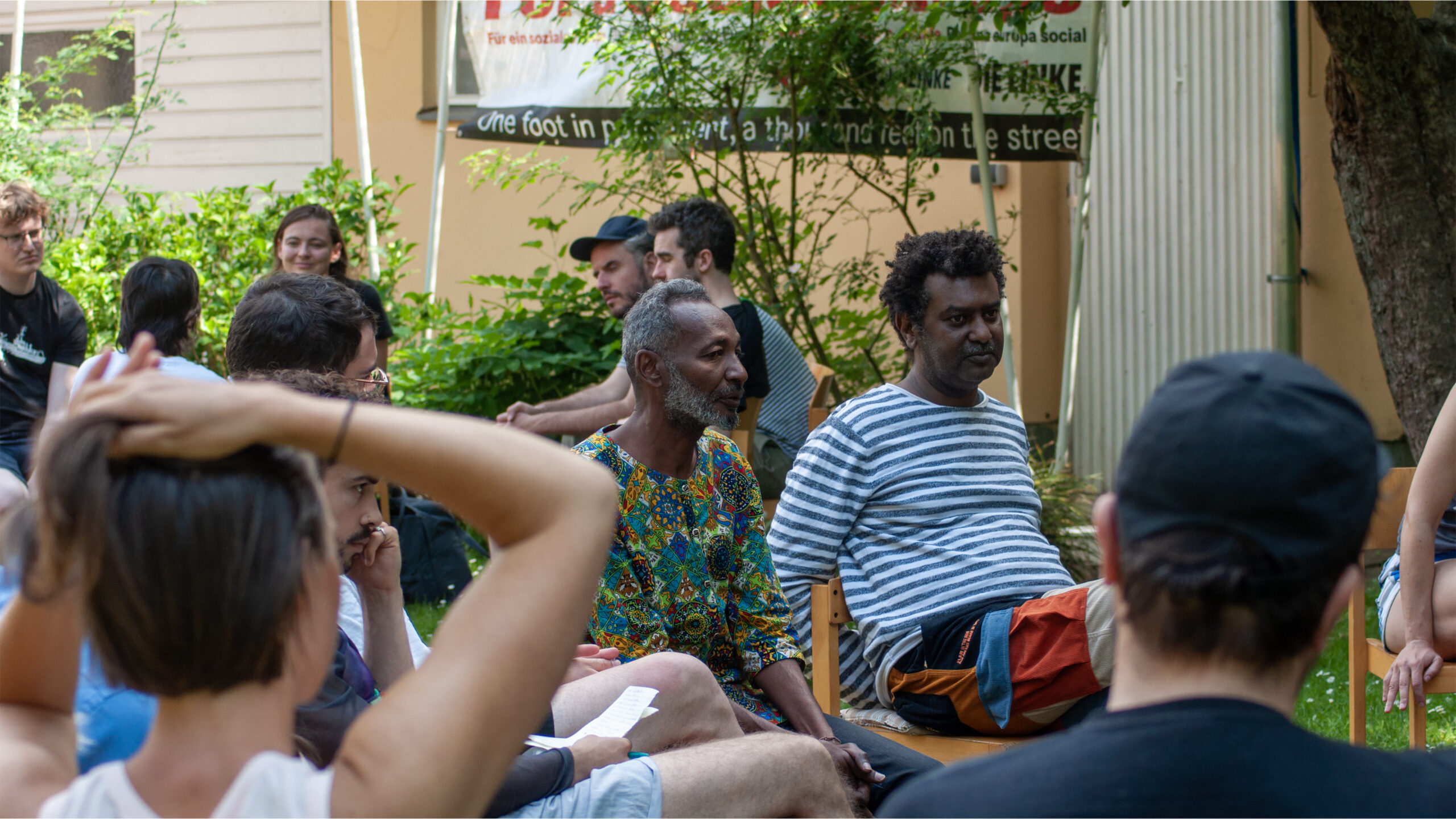


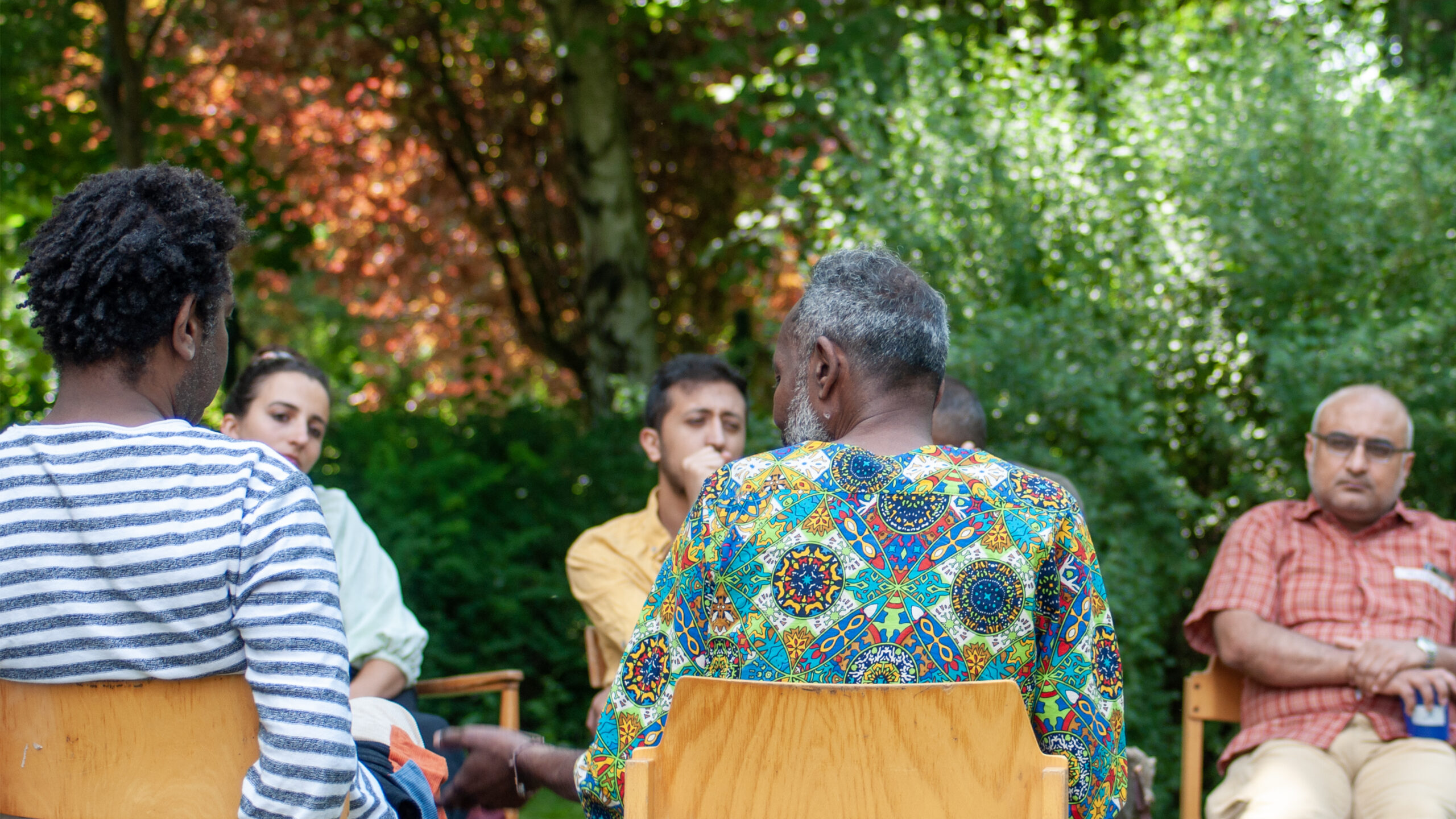

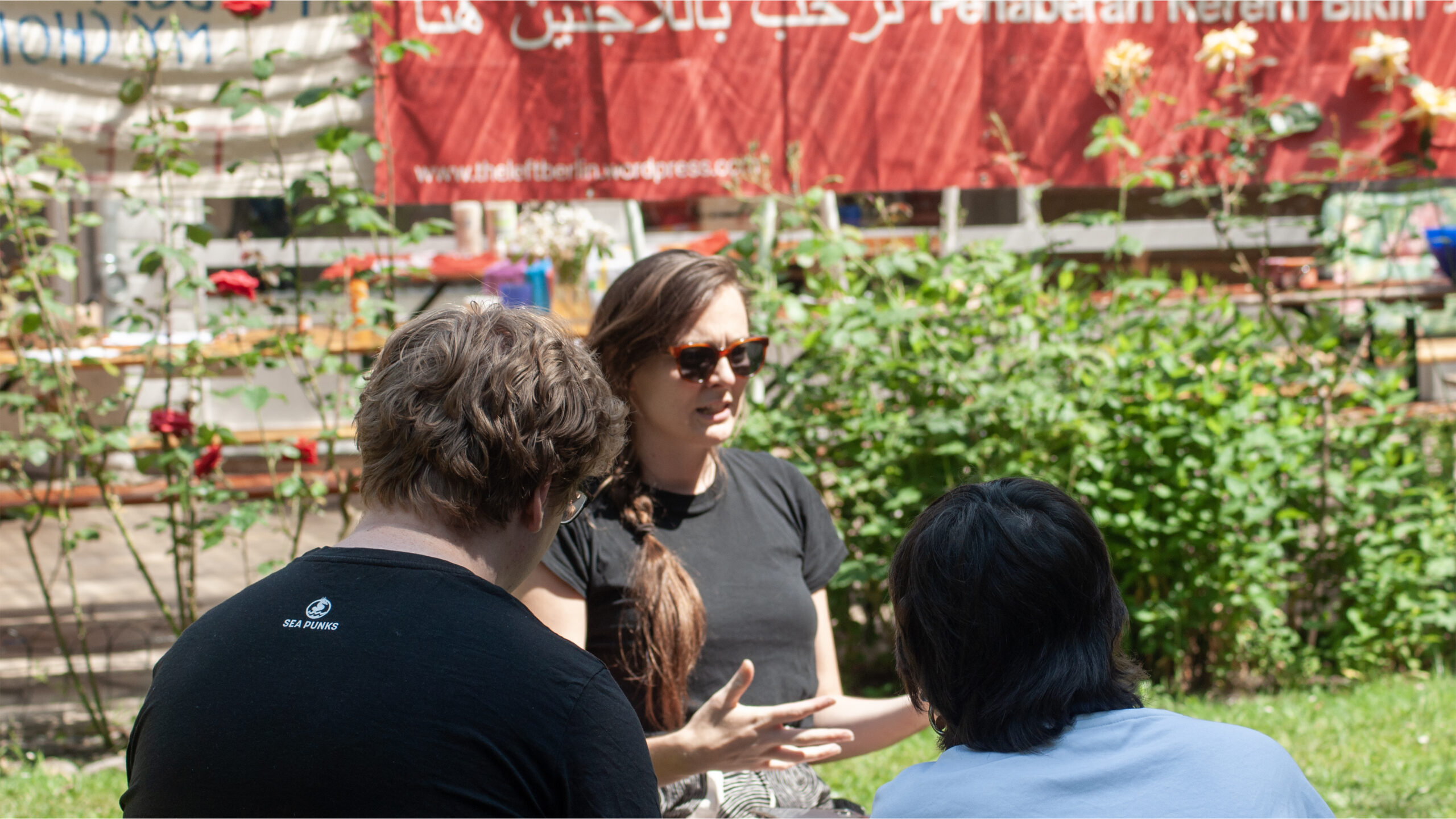

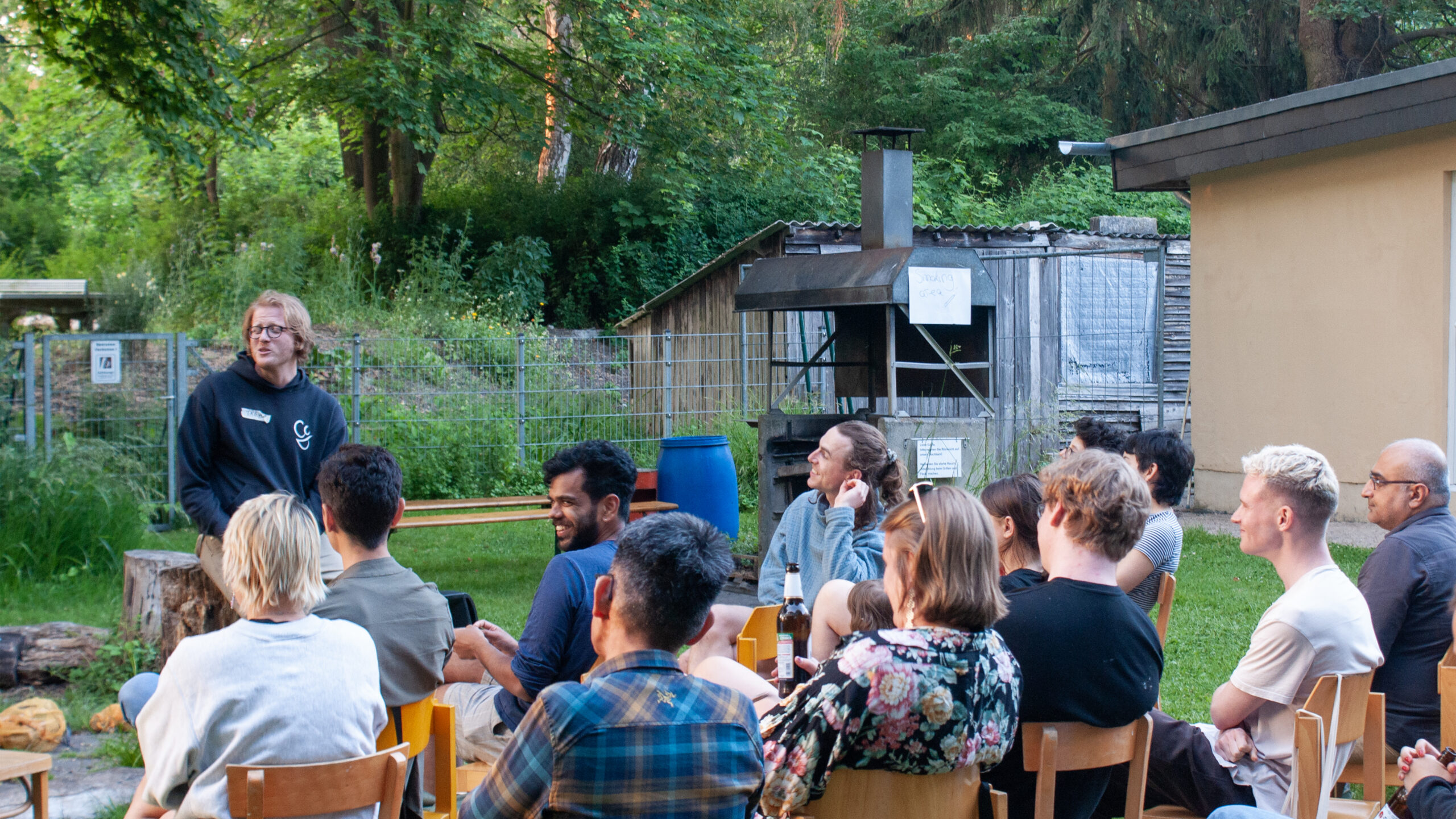


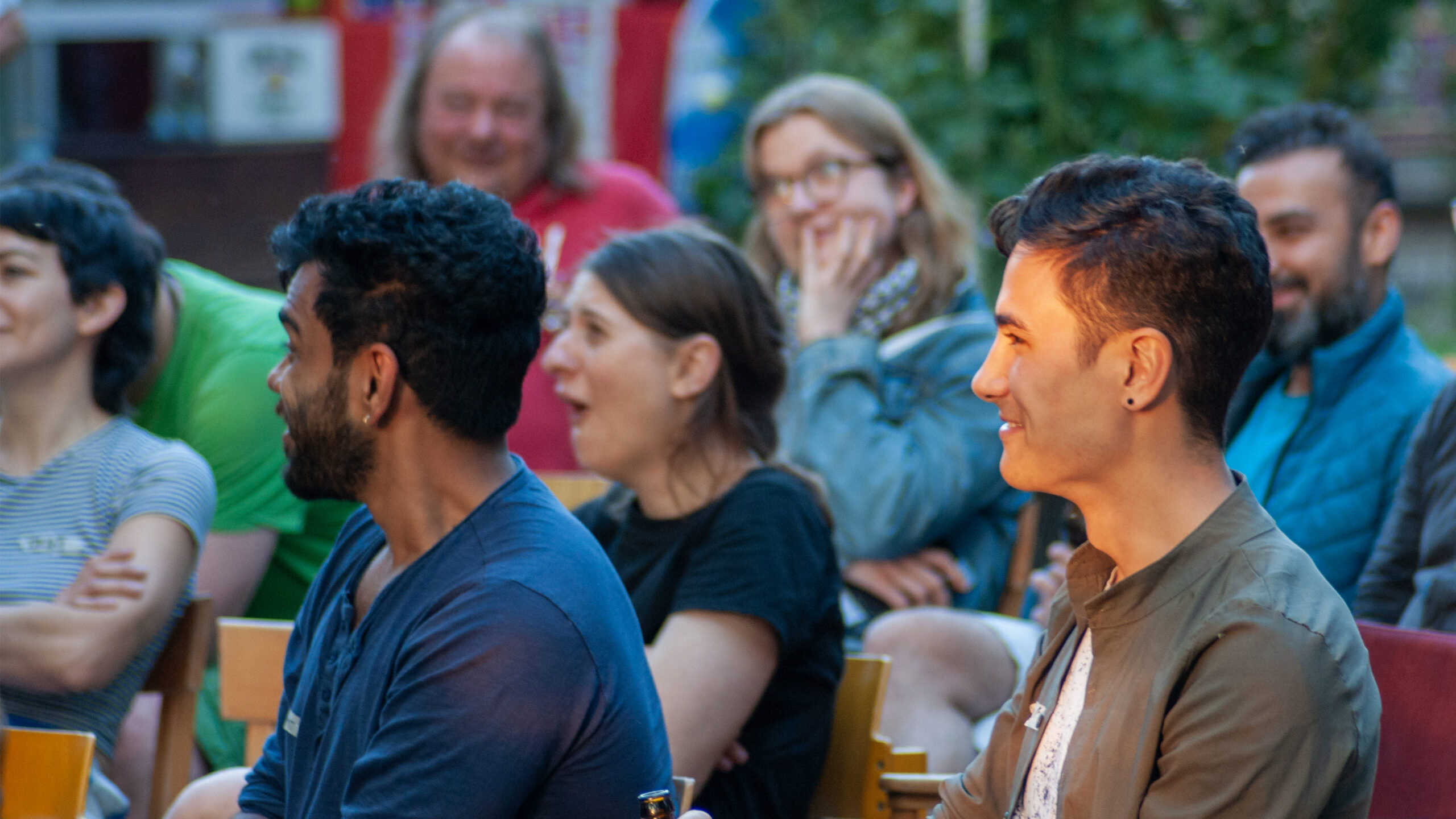







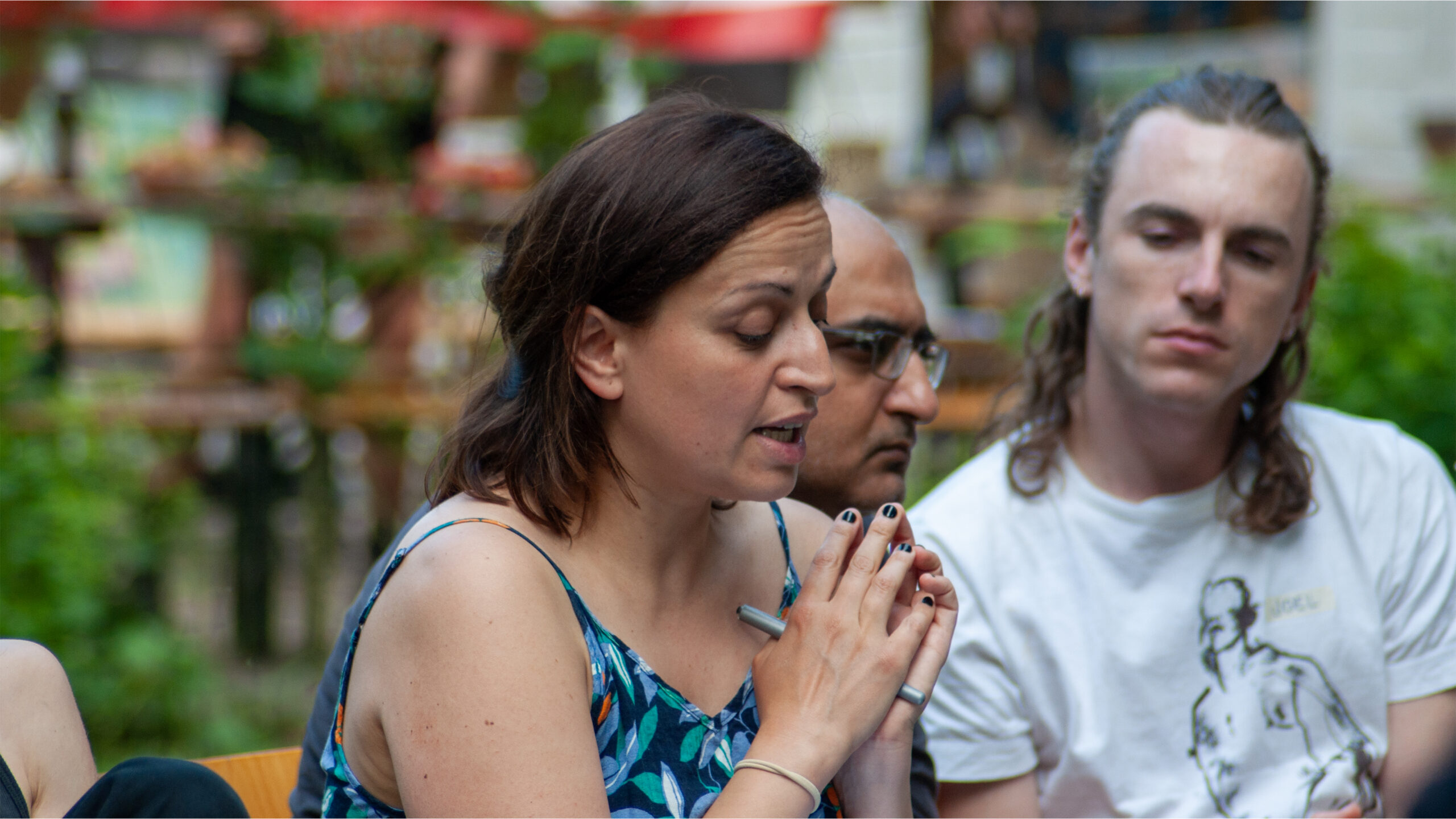
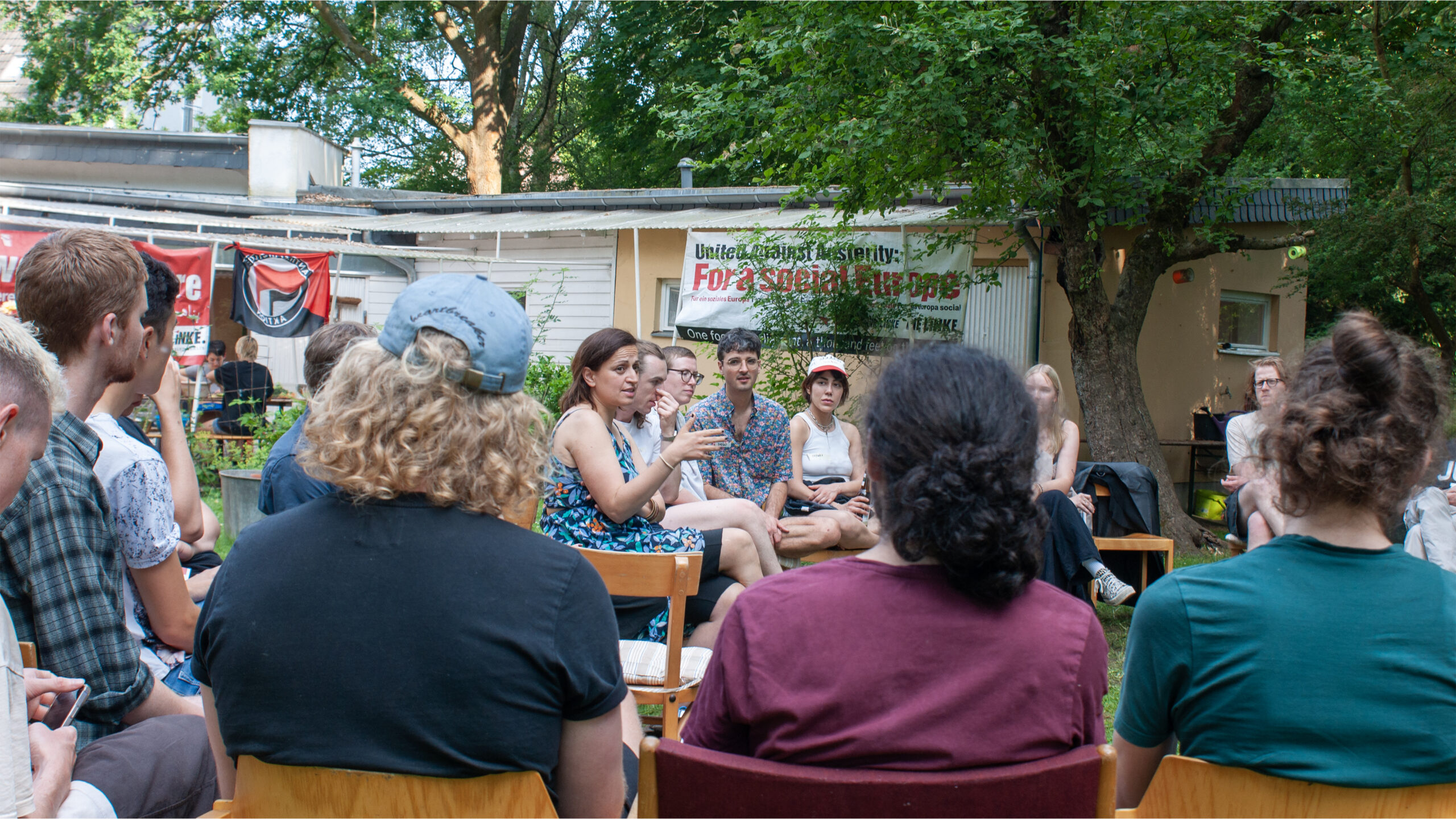



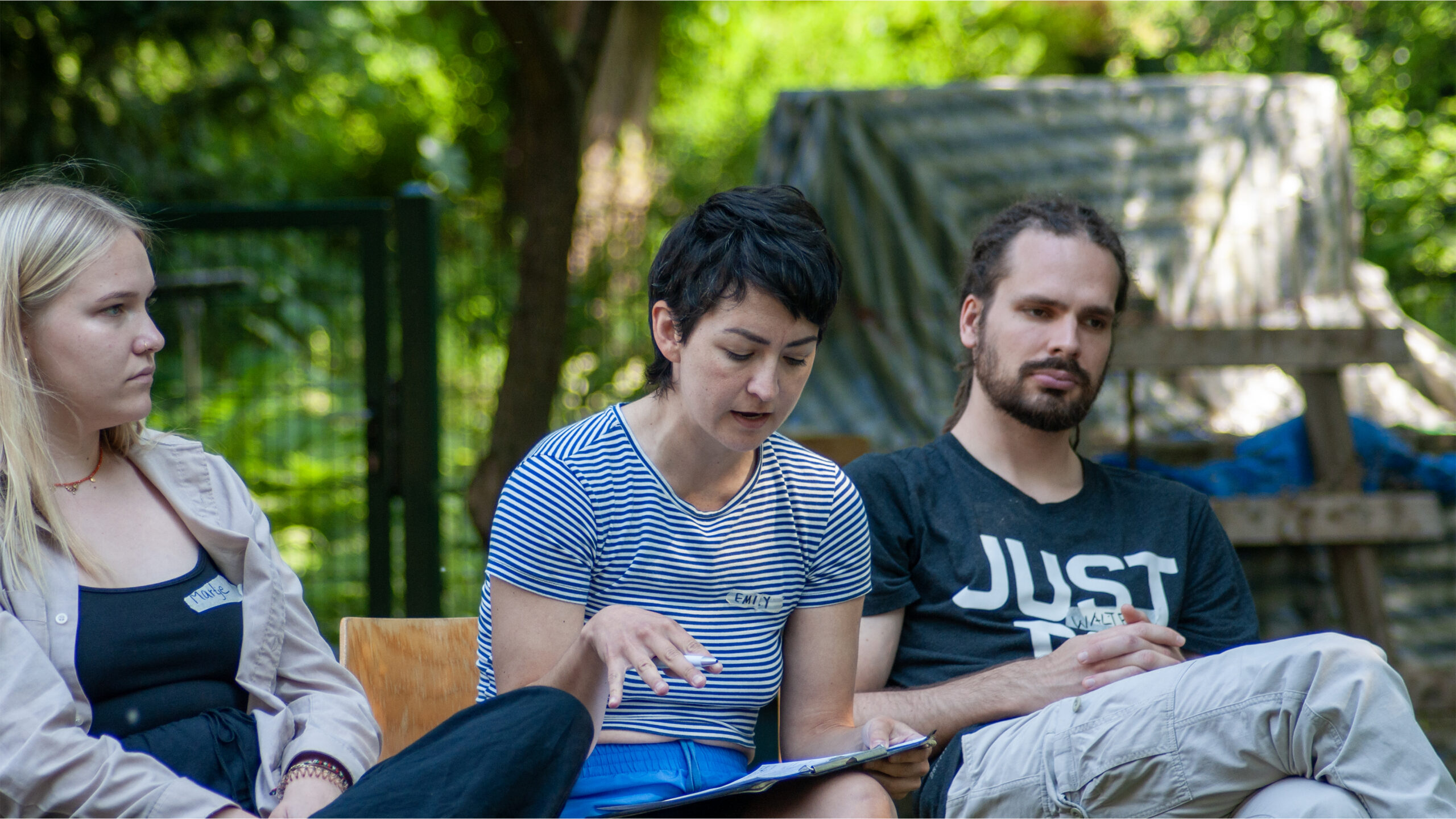


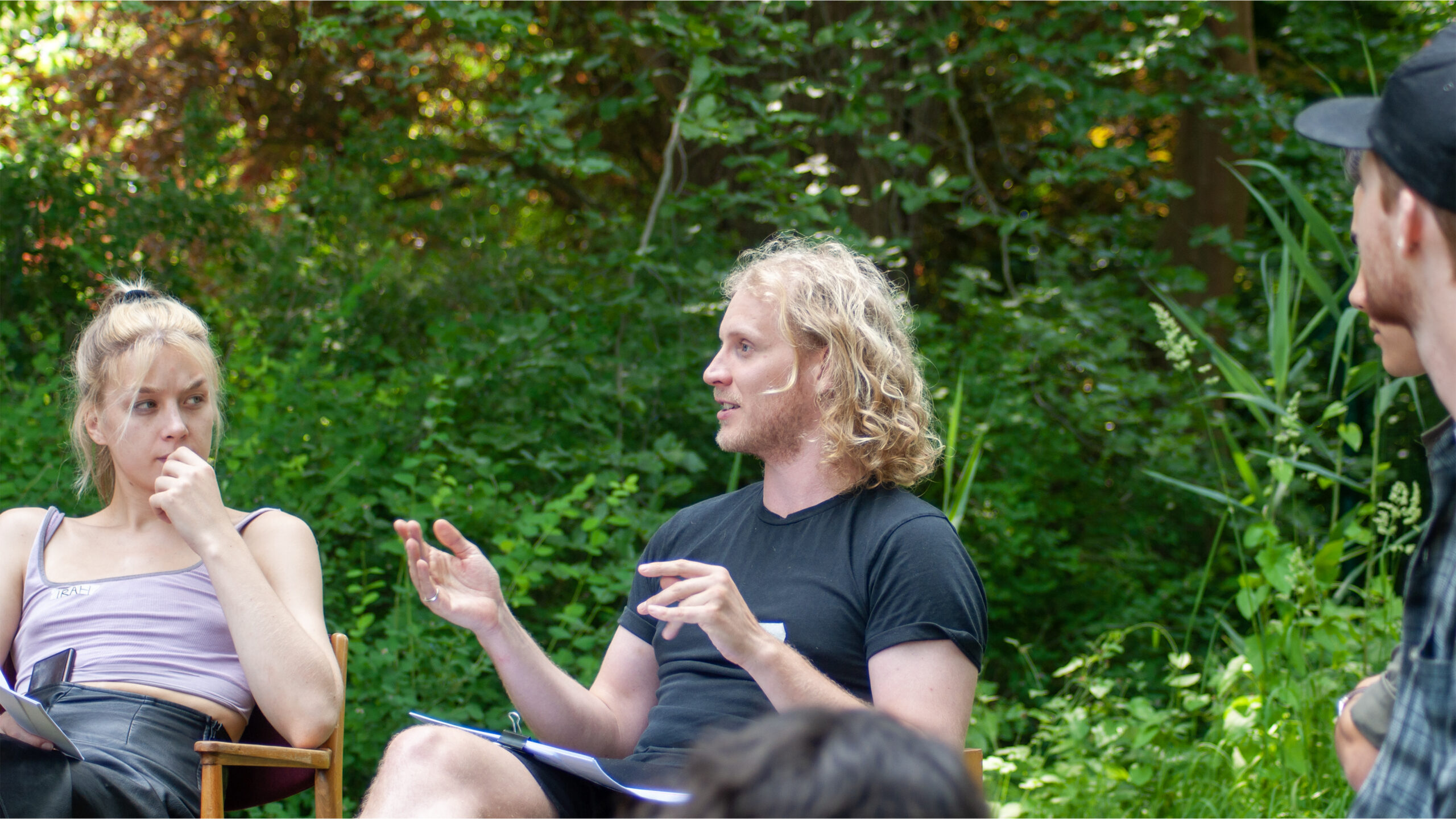

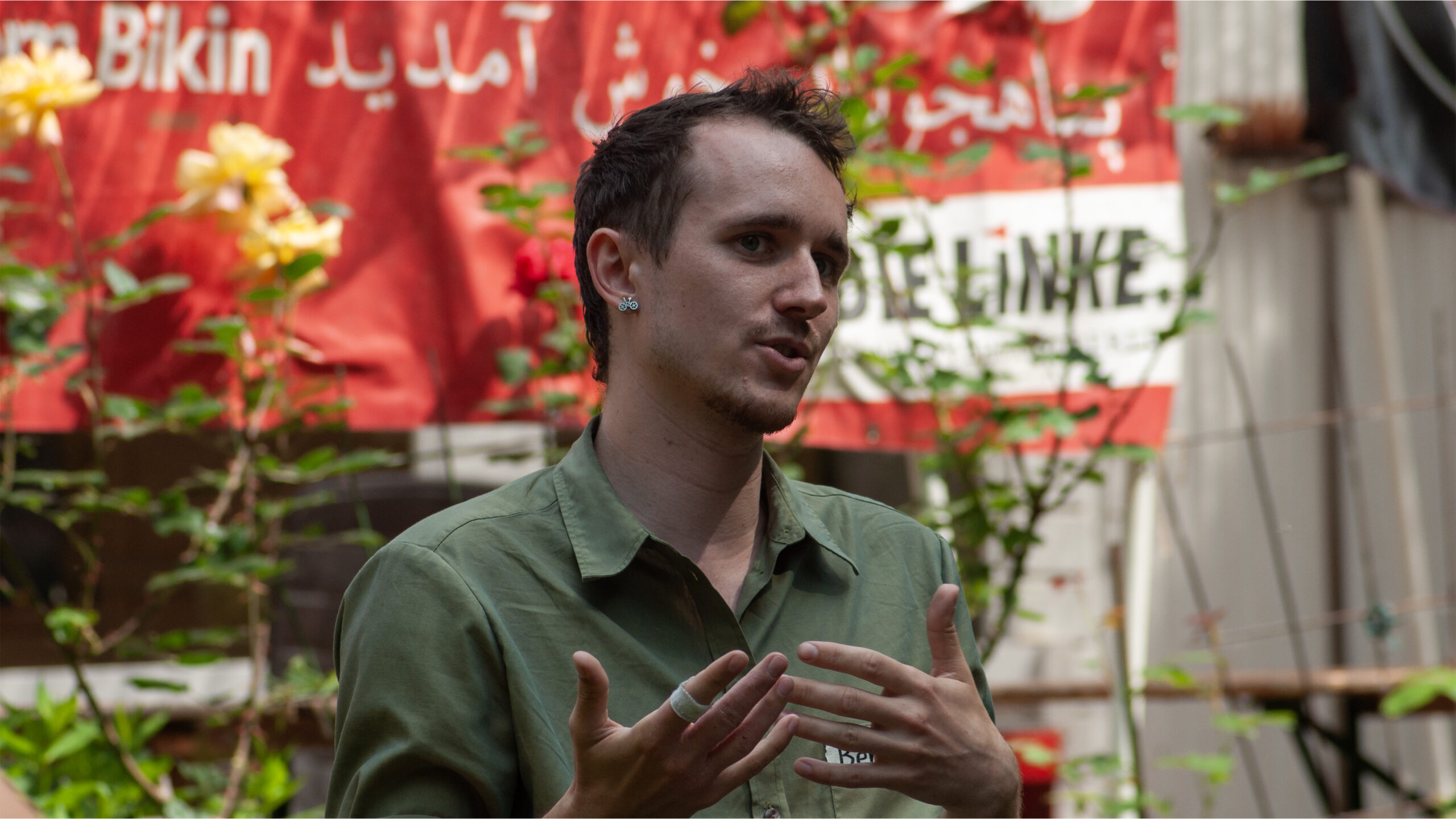

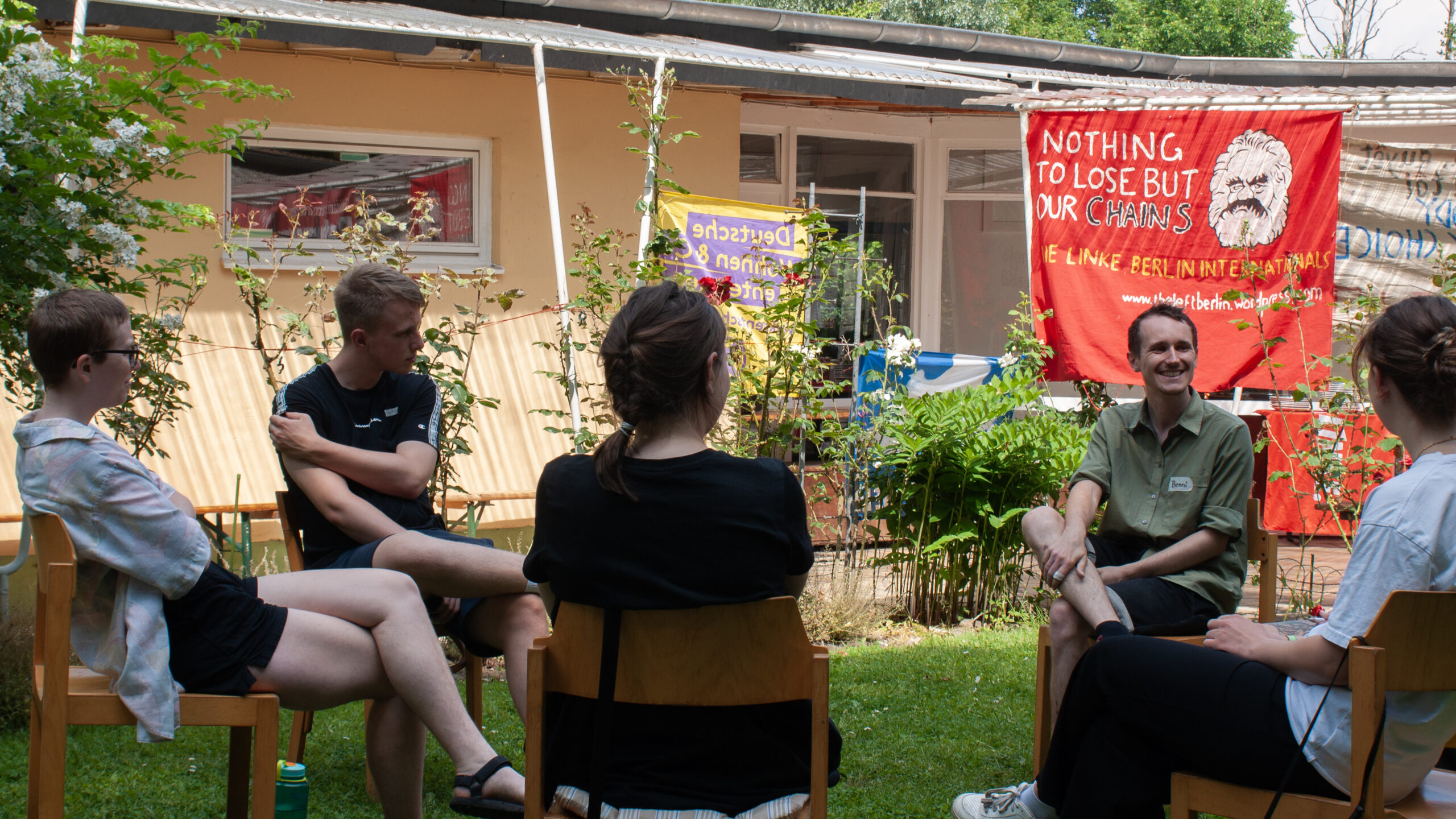
Photos from the Berlin LINKE Internationals Summer Camp, 10-11 June 2023
Antony Hamilton
18/06/2023
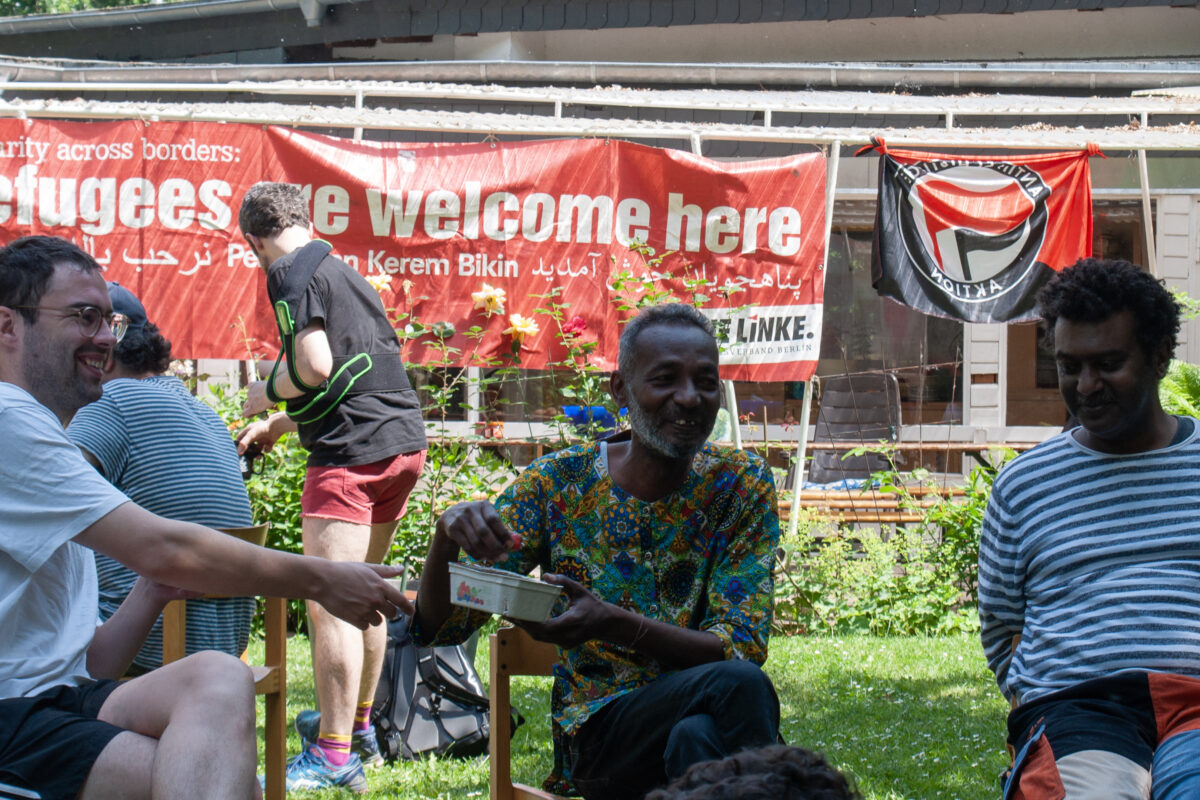

















































Interview with the European Legal Support Center’s Advocacy and Communication Manager Alice Garcia
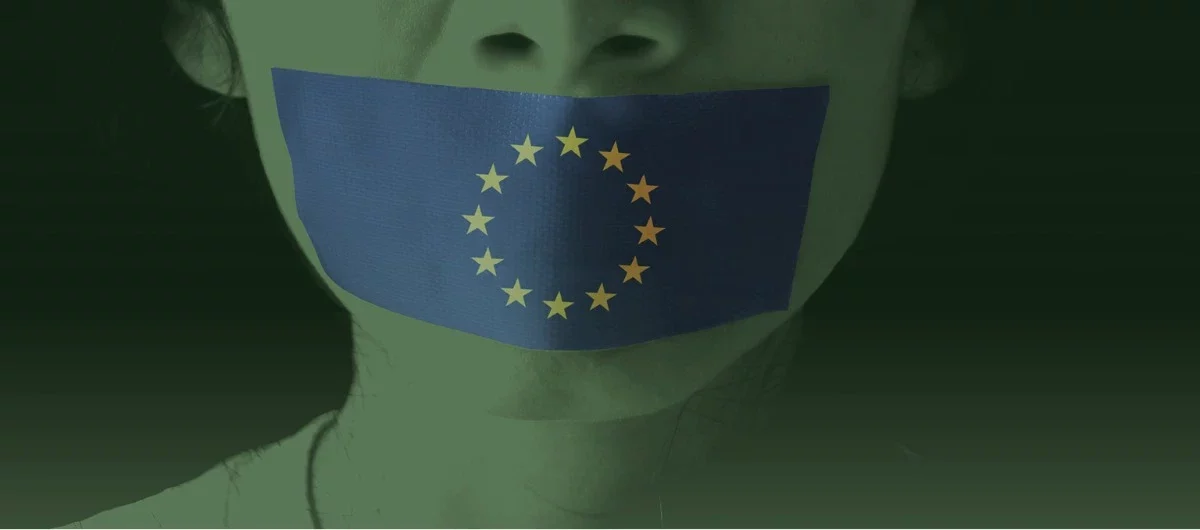
The European Legal Support Center (ELSC) defends and empowers advocates for Palestinian rights across mainland Europe and the United Kingdom through legal means. It released a groundbreaking report,“Suppressing Palestinian Rights Advocacy through the IHRA Working Definition of Antisemitism – Violating the Rights to Freedom of Expression and Assembly in the European Union and the UK”. We interviewed the ELSC’s Alice Garcia about the report.
Can you describe what the International Holocaust Remembrance Alliance (IHRA) definition is, and what the ELSC report tells us about it?
The supporters of the IHRA definition argue that it’s the only definition of antisemitism that fights what they call – Israel related antisemitism, or the “new antisemitism”. Basically, this means any anti-Zionism and criticism of Israeli policies and practices. This “new” antisemitism theory goes back a few decades. It was pushed by a few individuals and organisations who are aligned with the Israeli government agenda, such as Dina Porat, the head of Tel Aviv University’s Kantor Center for the Study of Contemporary European Jewry. It was funded by the Mossad, and members of pro-Israel advocacy groups such as the Community Security Trust in the UK, the Anti-Defamation League, the European Jewish Congress and B’nai Brith International. This is documented by Anthony Lerman, a former head of the word Jewish Congress’ institute of Jewish affairs. In 2006, the European Monitoring Center on racism and xenophobia (EUMC), adopted this definition to reconceptualize antisemitism. However it abandoned this because of concerns. The the advocates of the definition tried to find another organisation to give it legitimacy. Finally the IHRA – an intergovernmental organisation working on the remembrance of the Holocaust, adopted the definition in 2016. The history of this definition shows the original purpose – to suppress criticism of Israeli policies and practices. But it’s important to remember that criticism of Israel or Zionism is speech that is protected by freedom of expression. So, conflating it with antisemitism does not stand ground. It is a tactic to silence Palestine advocacy and to shield Israel from accountability for its violations of international law.
There’s already been a lot of writing about and criticism of the IHRA definition and the controversial examples of supposed antisemitism that are attached to it. What does your report bring that’s new?
The ELSC documented case studies through incident report forms and interviews, open source research and fact checking. Often we also provided legal support or advice to the individuals or groups affected by unfounded allegations. For the first time, we have a comprehensive document that presents case-based evidence of infringement on the democratic rights of individuals and groups caused by the implementation of the IHRA definition in the EU and UK. The report is based on 53 incidents alleging antisemitism that invoked the IHRA definition, in Germany, Austria and the UK. It also comprehensively documents how the definition was institutionalised at policy level by the EU. We expose the EU’s consistent ignorance or denial of the concerns; and warnings from many civil society actors regarding the political agenda behind this definition. We have been telling the EU for years that this is problematic for freedom of expression and freedom of assembly. In 2019 the EU Commission established a working group on antisemitism to work with affected communities. When European Jews for Justice in Palestine, representing various Jewish groups across Europe, applied to be a part of the group they were deemed not representative. Similarly, when the EU published their strategy to combat antisemitism in 2021, they ignored dozens of submissions from civil society actors criticising the IHRA definition. Our report also rebuts the Commission’s claims that the IHRA definition does not harm human rights. We therefore urge the EU to cease implementing the IHRA definition and to reconsider its endorsements and adoption, and the same for member states and institutions. We hope that this report is a tool to advocate against adopting or implementing the IHRA definition in other contexts. Because there is still a push to have it adopted as widely as possible. Currently, the UN is drafting its own plan to combat antisemitism, to be presented in September.
Defenders of the IHRA definition claim that it clarifies between criticism of Israel and legitimate antisemitism, why is this not true?
There is a caveat in the definition, that criticism of Israel like that levelled against any other country cannot be regarded as antisemitic. What does that mean? It’s very vague and problematic, because any country can be criticised for human rights violations. And Israel is often criticised because there are extreme violations happening there. So human rights groups will be targeted for having supposedly disproportionate scrutiny over Israel, but in reality they also criticise China, Russia, Hungary, and so on. Of course, some groups and individuals focus primarily on Israel-Palestine, so they do not make similar criticisms of other countries. Does that make them antisemites? No. Just like people people focusing on China are not Sinophobes. And one other thing, Israel is not ‘any other country’, it is occupying another nation and practising apartheid against a specific group of people.
There’s a growing conflation, where practically everything can be incorporated into antisemitism. Is this what you see in your cases?
That’s exactly what’s happening. Sometimes there is not even a link between the alleged antisemitic content of a statement and the examples of the definition that are raised to target this specific speech. For example. In one of the cases in the UK, not detailed in the report, a student faced complaints for alleged antisemitism. The complainants had scrolled her social media and complained because she’d liked a tweet criticising the alliance between Israel and the US. That was the whole content of the tweet. The complainant raised the IHRA definition and said that this was antisemitic. We have dozens of cases like this. People think ‘oh, I will take my magic tool, the IHRA definition’. And that’s enough to say that it’s antisemitic. It was enough for the university to open a formal investigation against the student, and a disciplinary proceeding that took months which eventually rejected the allegation, after legal intervention. The IHRA is also often used alongside other accusations, such as not respecting democratic values or being too political. For instance, in the Netherlands, universities place administrative burdens on students to prevent them from organising their events. We have a case where students wanted to organise a workshop on how to cook Palestinian hummus. For two years they are trying to organise this event, but are prevented because it’s said to be too political. Or, another tactic is to make unfounded allegations of support of terrorism; or alleging ties with groups listed as terrorist groups by the EU or other member states. Usually it’s about Hamas or PFLP, and the ties are not substantiated.
The IHRA’s proponents also claim that it’s not legally binding, and thus safe to use. This report debunks this with evidence. Can you explain how this claim that the definition is ‘non-legally binding’ isn’t representative of how it’s being used?
This definition is constantly being branded as “non-legally binding”, whether in the definition itself, or by EU officials. This supposedly means it does not harm free speech. But actually, tools like the IHRA definition don’t have to be codified in law to have concrete effects on human rights. The report shows this. We explain how it has been adopted through policies and so-called non binding resolutions adopted in parliaments. As soon as these policies or strategies are treated as authoritative by the relevant institutions (whether a local council, a university, parliament, or a state) then it has a de facto binding effect on individuals. Someone who explained it very well is the former UN Special Rapporteur on racism. She published a report in October 2022, which we quote. From the moment that states use the IHRA definition as guidance for judges, police, law enforcement and teachers to determine what is antisemitic, then it has a binding effect. Also, the EU Commission itself expressed this in their 2021 handbook on how to implement the IHRA definition. It recommends referencing the IHRA definition in legislation, using it to train judges and police officers. How much more binding than this can it be?
Although this definition is supposed to help fight antisemitism, you argue that it’s actually implemented in a discriminatory manner. How so?
In the documented cases, the allegations of antisemitism invoking the IHRA definition were overwhelmingly targeted at Palestinians, Jewish people, and organisations that advocate for Palestinian rights. And this suggests that the IHRA definition is being implemented in a discriminatory manner. We have no data about how the IHRA definition is being used against anyone else but Palestinian rights advocates. But the cases that came to our attention and are in the media all concern Palestinian rights advocates, and primarily Palestinians. Among the 53 incidents that we documented, 42 incidents involved the targeting of groups with members who are people of colour; or of individuals who are people of colour, and among them were 19 Palestinians. Then there were 11 incidents of Jewish groups or individuals targeted, in particular those with anti-Zionist views or sympathy to the Palestinian struggle. This data clearly shows potential discrimination in the way that the IHRA definition is implemented. The other component of how the IHRA definition is discriminatory is that it is a tool of anti-Palestinian racism. We look at the description of anti-Palestinian racism that was conceptualised by the Arab Canadian Lawyers Association last year in the landmark report they published. They described it as a form of anti-Arab racism that silences, excludes, erases, stereotypes or dehumanises Palestinians or their narratives. It takes various forms, such as excluding or pressuring others to exclude Palestinian perspectives, or defaming Palestinians and their allies with slander, such as being inherently antisemitic, a terrorist threat or sympathiser, or opposed to democratic values. So it is very clear, as shown in our report, that the IHRA definition is a tool of anti-Palestinian racism. Because by allowing unfounded allegations of antisemitism against critics of Israel, the definition de facto silences advocates for Palestinian rights and therefore erases the narratives of Palestinians and their legitimate calls for justice.
On to Germany. There’s a lot of discussion about the situation here. You’ve considered Germany here as one of three case studies. How exceptional is the repression in Germany, and how is it similar to other countries?
Germany is definitely exceptional in Europe in the sense that anti-Palestinian racism is so institutionalised. Palestinians and their allies are preemptively banned from demonstrating in the streets to commemorate the Nakba, their catastrophe. It’s also one of the countries in Europe in which we received the most requests of legal support because of the extreme climate of censorship and repression against Palestinian rights advocates. The conflation of anti-Zionism and criticism of Israel with antisemitism is completely normalised, and this for so called raison d’état. Berlin is also the city in Europe with the biggest community of Palestinians, yet their identities are completely erased and denied. Children in school are being reprimanded for even saying that they come from Palestine, the teacher will tell them ‘oh well this is not a country’ or ‘oh you mean Israel’. Also, Germany has systematised the use of anti-BDS resolutions. These resolutions concretely restrict activists rights in terms of renting spaces for events, or getting funding. So again, a non-binding policy that is often adopted through resolutions. These resolutions are adopted at a local level or regional or federal level to suppress any activity or events related to BDS. These anti-BDS resolutions are not unique, because Austria is similar. In France and Spain, there have been attempts to criminalise boycotts. And the UK is now on the way to propose its own anti-BDS bill. So, in that sense, Germany is more “normal”. And we have to remember that this is part of a global strategy, promoted by the Israeli government. Including through its Ministry for Diaspora Affairs and Combating Antisemitism. But we could say that Germany has one of the most worrying patterns of repression in Europe right now.
So can you give us a concrete example from the report about how the IHRA definition has been used in Germany?
I think I have to mention the Nakba demos. The IHRA was mentioned in all but one of the prohibition orders of the demonstrations related to the commemoration of Nakba in Berlin. It happened in May 2023, but also in May 2022. They reference it, and then add that the organisations and individuals taking part in the demonstrations are anti-Zionist, and therefore antisemitic. I am not even talking about all the racist sentences that are in the prohibition orders. It’s very worrying that the police used this definition as a tool to legitimise what is an undue restriction of freedom of assembly based on extremely racist assertions, as we explained in a statement and a video.
You write that the IHRA definition was endorsed by the German Federal Government in 2017, as well as various Länder over the two years following that, and used widely in anti-BDS resolutions here. What can local activists do in the face of these resolutions?
Many activists already challenged these anti-BDS resolutions in court, and so far, they have been very successful. In four cities — Munich, Oldenburg, Bonn and Frankfurt — the courts ruled that the restrictive measures carried out by municipal authorities constituted violations of fundamental rights to freedom of expression, assembly, and equality. So the judicial system in Germany still tends to resist and to protect fundamental rights. These initiatives are, of course, a model for activists. But these cost money and time. These decisions took years to be issued. Ideally, in the face of this jurisprudence, local authorities should now revoke their resolutions. This is why the legal battle of the BT3P, a group of activists challenging the federal Bundestag’s anti-BDS resolution, is crucial. The complaint was filed in 2020 and is still in the court of appeal, but could create a national precedent that could have effects everywhere in Germany.
Your report describes the successes in the UK in challenging the IHRA in courts, but this comes at a high cost and lengthy trials, as we’re seeing as a result of the last two Nakba Days in Berlin. What risks come with this court-based approach, even if we’re often winning in the courtroom?
Judgments are not always in our favour. So there is a risk of having negative precedents for the movement. But so far, we can count mostly on victories, which is empowering and confirm that we are on the side of justice. But, it doesn’t necessarily mean that we will witness a change in the mainstream narratives in Germany or the rest of Europe. As well, German judges often depoliticize and don’t touch on the elephant in the room. That is the question of the right to criticise Israel and the silencing of Palestinian voices. Then, of course, proceedings are lengthy and expensive, and often an emotional burden to those concerned. But that is why strong movements and networks of support are really crucial. This pushing back works, and we have many victories to show that.
Some optimism, then. Can you provide an example of these victories?
There is the case of Dr. Anna-Esther Younes, a Palestinian-German academic, which is still ongoing but so far really successful. Dr. Younes was surveyed and smeared by this organisation called RIAS Berlin, which claims to monitor antisemitism. RIAS sent a secret dossier to the organisers of a public event where Dr. Younes was supposed to speak in 2019. The day before the event she was disinvited because of this dossier smearing her as an antisemite, sexist, and a supporter of terrorism, etc. All this without substantiating the allegations. Upon receiving this the organisers, at the instigation of Die Linke Berlin and its leadership, disinvited her. So, Dr. Younes came to us. We filed a complaint against RIAS because they withheld the dossier which Dr. Younes requested access to (in line with European Data Protection Law), and the Berlin Data Protection Authority found that Dr. Younes’ right to access her personal data was denied. This decision followed a months-long public media campaign as well as a lawsuit brought against the Berlin Data Protection Authority for its inactivity. Dr Younes got access to the dossier and appealed to get the court to recognise the damage made to her reputation and that the preparation and transmission of the dossier was not legitimate.
What would be the implications of a victory in this case?
If RIAS is finally made accountable, which is what we aim for, then their surveillance of human rights advocates will stop. Remember that RIAS, in the lawsuit against them, stated that they collected information on Dr. Younes in order to “identify her positions on Israel and BDS”. This group targets Palestinian rights advocates or academics writing about Palestine like Dr. Younes, then try to find things to frame as antisemitic based on the IHRA definition. They then send this information privately to other organisations and institutions. With concrete, terrible consequences on these people which can completely exclude them from academia, and damage their reputation. It also violates data protection law. So if we are successful, then we hope that RIAS Berlin and others will stop this illegal practice. Because many activists fear being surveyed, and this gives a good precedent for their safety.
You also write that section 46 of the German criminal code has been amended by a bill referencing the IHRA definition in regards to hate crime. Can you explain this?
A law was passed in 2021 against far-right extremism and hate crime. It amended paragraph 46 of the penal codes to include antisemitism among the motives and aims to be considered by courts in sentencing perpetrators. Section 46 doesn’t mention the IHRA definition. But the bill leading to this law amending the Code did mention the IHRA definition as a reference tool, for determining what is antisemitic conduct. It also references the examples attached to the definition. Even though this was in the bill and not the final law, it still entails risk; because preparatory works and materials are still used by courts when they interpret meanings and purposes of a law. So, a reference to the IHRA definition, even in the bill, could influence and mislead German courts. They may falsely interpret criticism of the Israeli government as antisemitism, which is subject to prosecution and punishment. It therefore exposing Palestinian rights advocates to criminal charges. This poses a serious threat to freedom of expression.
In Berlin where there’s such a large Palestinian community, many of them refugees, the right of return is often discussed. How does the IHRA definition’s claim that it’s antisemitic to question Israel’s right to exist, affect this Palestinian right of return?
We haven’t touched upon that question a lot, but the right of a state to exist is not a concept recognized by international law. There is a right to self determination in international law, but for people not for states. I can refer to two expert reports published on our website. These challenge this prevailing narrative around the notion of Israel’s right to exist from a legal perspective. It’s undeniable the state of Israel exists upon the expulsion and displacement of Palestinians. Perpetrating this displacement for Palestinians sustains the continued presence of the state of Israel. The criminalization of this criticism directly renders this right of return obsolete or a non-right. But in any case, we have observed several incidents of suppression of Palestinian rights advocacy where this notion of Israel’s right to exist is very broadly interpreted and instrumentalized to purport allegations of antisemitism. This is often used to repress anything related to the Nakba; or its’ advocates who carry banners in protests that show the map of historic Palestine; or people expressing the concept of settler colonialism of Israel.
The early 2000s – rise in class struggle
Phil Butland
17/06/2023
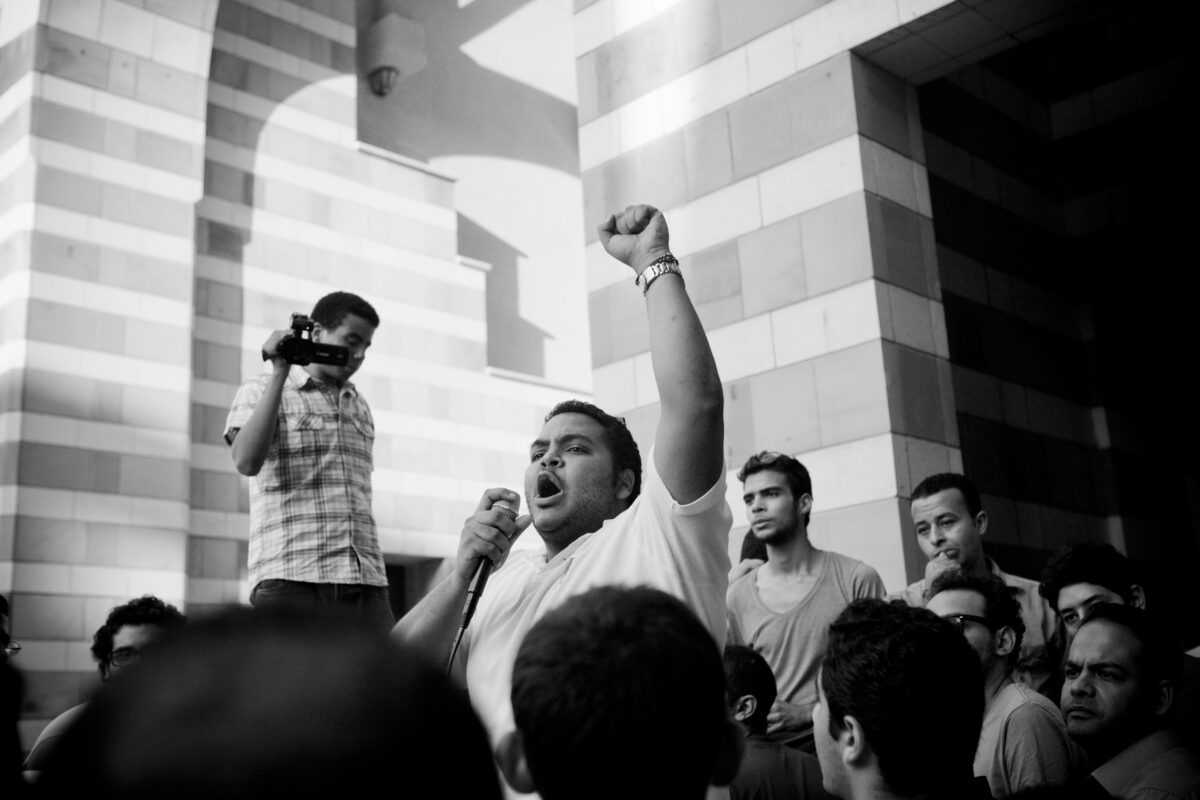
Editor’s Note: Phil Butland and Helena Zohdi recently interviewed Hossam el-Hamalawy about the history of the Egyptian Left. You can read Parts 1, 2 and 3 of the Interview here, here and here.
HI Hossam. We finished our last interview with the Kefaya street protests in the early 2000s. Was there similar industrial action?
Not long ago I asked industrial labor leaders, “Where were you when Kefaya was protesting in the streets?” And they said, “We were in front of our TVs, watching those crazy kids burning Mubarak posters in downtown Cairo and in Tahrir Square. And we were looking at one another with disbelief.” But they did start to draw parallels. They thought, “If these kids can take on Mubarak, then we could take on the CEO of a textile mill.”
The strike in Mahalla in December 2006 took place in this context. Mahalla is the biggest textile mill in the Middle East. At the time, it had some 22,000 workers working in a mega-compound.
The women usually worked in the garments sector, with the men in spinning and weaving. The strike started with the women, over bread-and-butter issues like two-month bonuses that were promised but not delivered on by the prime minister.
So the women workers went on strike, touring the factory compound chanting, “Where are the men? Here are the women.” It was a modification of the football chant, “Where are the press? Here are the heroes.” The men then joined the strike, which lasted four days. And despite intimidation by security forces, the workers won.
The victory of the Mahalla workers triggered the “Winter of Labor Discontent,” where nearly all the textile mill workers in Egypt went on strike. Their militancy started spilling over into other industries. Railway workers went on strike, then the cement workers. Strikes were everywhere.
I recall attending a meeting by the EgyptAir Hosts Association in 2007. This was the first time the association had met in ages, but members were encouraged by what was happening in the country. They met because there was anger among air hostesses and hosts about living conditions, salaries, working conditions, and so on. In the middle of the meeting, someone stood up and yelled, “Do we have to act like the textile workers to get our rights in this country?” The Mahalla workers had become a source of inspiration for everyone.
Where do the visuals of these actions fit into the larger picture of the Egyptian strikes?
In 2007, there was not a single factory that I visited while covering industrial actions across the country where I didn’t hear strikers saying, “We saw the Mahalla workers striking, so we decided to strike. We heard that the Mahalla workers are striking. So, we decided to strike. We read in the newspapers that the Mahalla workers are striking. So, we decided to strike.”
The spread of information was essentially an act of education. I was obsessed with how activists could create this sort of domino effect. How can you break your isolation? For me, the answer was the spread of information.
All the time, when activists like myself talked to people about changing Egyptian society, we felt that we were perceived as crazy, and felt isolated. Most people think that it is normal to have rich people and poor people. It’s normal that the police will repress us. Everything that you see around you is being normalized all the time. Marxist philosopher Antonio Gramsci wrote tons about this, when he talked about “common sense.”
But there always is a tiny minority of crazy kids who have ideas about changing the society that they are in. And in Egypt, they were starting to do something about it.
So, if you were in the region of Sharqiya, and you had these ideas, you would feel that you’re not the only crazy one who’s thinking about toppling Mubarak. You would know there are other crazy people in Cairo too who have started to do something. There are people in Alexandria who have started taking action. So why not join them?
This is where visuals were important. Our strategy as Revolutionary Socialists took into consideration that we were still a small group. We had dozens of cadres, with a few hundred members. We had a presence within industrial centers, but it was weak. Our strategy was to engage with the strikers in two ways.
The first thing was to link the strikers together. When we went to the Mahalla textile mill, we told the workers, “By the way, your brothers and sisters in Kafr el-Dawwar are doing the same thing. Why don’t you join forces? If you come to the Center for Socialist Studies, we will hold a public talk about this, and we will invite leaders from the other textile mills where you can meet and start liaising with one another.”
The second strategy was to bombard the public with images from and news of industrial actions. This meant that we talked about the actions all the time, we took photos and videos as much as we could.
At the time, accessing the internet in Egypt was possible but it was still limited. We didn’t yet have 3G or 4G networks. Blogs did exist in 2005 and 2006, on which we could post photos with our statements, and we’d add to posts the web addresses of our blogs and our activist websites. This allowed workers to learn more about us.
At first, some comrades were conservative about this sort of action. They argued that it was virtual reality rather than a real struggle, and that our print newspaper should be our only platform, or at least the most important platform. But these comrades were missing developments that were happening very quickly.
There were cyber cafes in all the neighborhoods in Egypt, including in working-class areas. Kids used to go to these cafes to play games or send emails, or even watch porn. But increasingly, they were also checking out activist blogs.
What was happening to you at the time?
I finished my bachelor’s in economics in 1999, and my master’s in political science in December 2001. I wrote my dissertation on the 1977 uprising and was initially planning to go into academia. But I was blacklisted because of my arrest record. I was banned from taking an academic job.
By sheer coincidence I got into journalism. I worked for local and international newspapers, including the Los Angeles Times. Later I put my media expertise and skills into my organizational work. We started building a media apparatus within the Revolutionary Socialists group. I believe that this strategy of visualizing dissent is what allowed us to punch above our weight.
We were advanced when compared to other groups in terms of using new media, the internet, and visual communications. We also had ideological clarity, unlike the defunct Stalinist groups or other organizations. We understood how these strikes fit into the bigger picture in Egypt.
What happened to Kefaya?
Kefaya fell apart in 2006, as we had been mobilizing to stop Mubarak but he remained in power. Campaign-oriented movements can’t stay the same forever. Statements by Kefaya appeared up until 2011, but honestly, Kefaya was over as a movement by 2006.
When the labor strikes started, the activist community was initially split as how to react. Some argued that we should go to the factories and convince the workers to chant, “Down with Mubarak!” And if they didn’t do this, then they dismissed the factory workers. One famous liberal journalist complained to one of our comrades that the workers were slaughtering themselves just to increase their food allowance by 12 Egyptian pounds.
I belonged to the other part of the activist community. Some of our positions focused on economics, I must admit, but we initially concentrated on engaging with the workers directly, within the limits that they had set for themselves. Because if they achieved their economic demands, they then would gain the courage to start putting forward political demands.
In a way we were right, because when you look at these strikes, at the time Egyptian citizens were living under an emergency law that banned the assembly of more than five people. I grew up and lived all my life under this law. By the way, this is a law that the British had introduced during World War I.
In a country where the assembly of more than five people is illegal, but you’re able to get 22,000 workers to strike, they are in effect breaking the law, and that’s a political decision. People knew they were breaking the law.
Egyptian workers were prepared to strike over bread-and-butter issues even though they knew that outside the factory gates, security forces were waiting to storm in. State security police might raid their homes at night, kidnap them and torture them.
If workers will still strike under these conditions over a 12-pound food allowance, this is a political decision. The striking workers will be necessarily on the receiving end of state repression. In a country where women are second- or even third-class citizens, but are nonetheless spearheading strikes and challenging gender roles, isn’t that politics?
In Egypt, the Copts, or Orthodox Christians, are also second- or third-class citizens and often discriminated against. However, when any sector which has a substantial Coptic presence goes on strike, you find that Muslim workers are more than happy to work with their Orthodox Christian counterparts and elect them to lead the strike, challenging sectarianism. Isn’t that a political decision?
The railways have historically always employed many Copts. And the person who led the railway strikes in 2006 was a Copt. Then there were the tax collectors. Tax collection, because it is a hated job, has historically always been given to minorities like Copts and Jews. There were many Copts among the tax collectors who also went on strike, and many of the leaders and organizers of these strikes were Copts.
Did workers start to generalize?
Yes. Our bet proved to be correct. Because the same Mahalla workers who went on strike in 2006 and 2007 over economic demands decided then that they wanted the establishment of a national minimum wage. On 25 February 2008, 15,000 workers left the Mahalla compound and took to the streets.
They were joined by another 5,000 people, and they were chanting against Mubarak, against his wife Suzanne and his son Gamal, overtly political chants against Mubarak’s family. They threatened that if the government did not submit to their demands of raising the national minimum wage, that they would go on strike on 6 April 2008.
This was preceded by general calls on Facebook and other internet media for a general strike in Egypt. We did not endorse the call for a general strike, as general strikes do not happen this way. Instead, we focused our energies on places where we had roots and presence, such as in Mahalla.
On 6 April, the government went in early and occupied the textile mills. They arrested the strike’s leadership, including our comrades. The factory was occupied by central security forces and the strike was aborted. But from that early hour, locals in town had decided to surround the mill.
Mahalla is like many historic towns in the United States or in Britain, where the whole town is related to a company or some commercial activity. Everyone in Mahalla basically has relatives who work inside the textile plant.
The people surrounding the factory were waiting for the strike to happen. But nothing happened. Then the news trickled out that they had arrested the strike’s leadership. And that’s when the uprising started in earnest.
There are so many conflicting stories about the how the uprising was triggered, and they might all be true. Some people say a police officer hit a woman in El Shone Square, the main square in Mahalla. Others say a child started chanting and he was hit by police. While a general strike did not take place, the town instead erupted in a two-day uprising that was brutally put down by security forces, killing three people.
The news and images of the riots got out to everyone, who saw people from Mahalla stamping their feet on Mubarak posters. And this signaled the beginning of the end of the Mubarak dictatorship. Strikes were now happening everywhere, to the extent that newspapers were full of business experts who complained about the “plague of strikes” that had engulfed Egypt.
We have a proverb in Arabic, which translates into, “If you need something from the dog, tell him that you’re my master.” It’s a symbol for opportunism. This proverb got changed into, “If you need something from the dog, tell him I’m staging a sit-in.” This is the context which led to the Egyptian part of the Arab Spring in 2010 and 2011.
I’m sure our readers can’t wait to hear about this, but we’ve run out of space for this article. We’ll cover the Arab Spring and what followed in the next and final part of this interview.
You can subscribe to Hossam’s blog on contemporary Egyptian politics here.
How could the right wing make such gains in the recent Greek elections?
Dimitra Kyrillou
16/06/2023
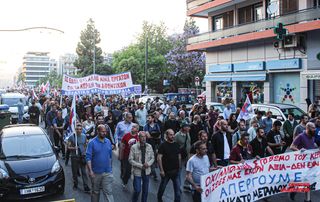
The results of the Greek parliamentary elections of May 21 were a cold shower for the left and everyone who has spent the last four years struggling against austerity, privatizations and repression. Not only did the governing party of the right-wing New Democracy (ND) avoid any losses, but they slightly increased their vote, reaching almost 41% of the ballot. The opposition led by Syriza, former star of the European Left and once the hope for a rupture from austerity memoranda, lost one third of their vote, landing a meager 20%. PASOK, the former stallion of social democracy, benefited and climbed to 11% while the Communist Party KKE increased their share from 5 to 7%, the only good news so far. Yiannis Varoufakis’s far-left coalition led by Diem 25 increased their votes, but failed to get the 3% threshold to enter parliament. A hotchpotch of far right groups emerged on the other end of the political spectrum, where the Nazi Golden Dawn once thrived, such as the Hellenic Solution gathering around 5%.
Since no single party could form a government, and ND is not interested in establishing a coalition cabinet, there will be a second ballot on June 25. This time it will take place under a different electoral system, passed recently by ND, which favors the party that gets the most votes, granting it up to 50 MPs. The undemocratic threshold of 3% to enter parliament is of course sustained, transforming the votes of “small” parties into more seats for the leading one. It seems that ND has escaped crisis and is heading towards a second office.
Many commentators rushed to speak of a conservative turn, some even lament the “Orbanization” and “Erdoganization” of Greek politics. Syriza blames ordinary people for becoming right wingers, for failing to understand Syriza’s strategy and the potential of coalition governments. So what happened?
The above analysis loses the contradictions and sharp divisions in Greek society. I have written previously for The Left Berlin that the last years have seen struggles and challenges to the current government. Two months ago, more than 2.5 million people participated in repeated protests against the horrible accident at Tempi, calling the ministers “murderers” and blaming cuts, privatization and the government which orchestrated them. But this immense social discontent did not find its political expression in the polls, contrary to what happened in the previous round of uprisings (2010-15), when Syriza became the undisputed electoral expression of social unrest and led a government coalition.
What has changed? The Greek working class was there, in the streets and the struggles, Syriza was not. Syriza, which was the main opposition party, refused to escalate the strikes on March 8 and 16 on the ground that change would come through the parliament, by simply by waiting for elections. They claimed that “with us in office everything will work, we are your people, we will do better”. At the same time they give oaths of loyalty to the “stabilization” programmes, and “investment grades” commissioned by the EU and the European Bank. This strategy obviously did not work. It plainly demoralized the working class and vindicated commonsense slogans like “politics stink”, “it makes no sense for whom to vote”, etc.
There is one more reason for the success of the right, which was actually underestimated by the political opponents of ND, including the present author: the generous promises that party leader Kyriakos Mitsotakis made shortly before Greece voted on his re-election.
New Democracy: A wolf in sheep’s clothing?
While being interviewed, among discussion of “law and order” and threats towards Turkey, Mitsotakis clarified his goal. “We are striving for a society with less inequality, that’s what the citizens […] witnessed, that in the difficult times of the pandemic but also during the energy crisis we focused our attention on the weak. If you ask me right now what my central objective for the next four years is, I would say: development with less inequality”.
Let’s compare the minimum salary proposal of the main political parties. Syriza suggested 850 Euros per month, KKE 880 and New Democracy 900! Furthermore, Mitsotakis rejected the coming privatization of water, following strong protests in defense of public ownership. His narrative appears to be that after cutting salaries, letting inflation skyrocket, sending the police to crack down when protesters took to the streets, he and his party can finally afford to look after the people and give them a little something from the accumulated profits.
With all respect to wolves, Mitsotakis is absolutely lying about delivering, but he had the grit to disguise his policies by announcing relief measures. In the meantime, the European Commission released the new “economic governance” proposal in April, concluding that a “strict” fiscal policy is the only way forward for all EU members, with additional provisions for indebted economies like Greece’s. It is inevitable that ND will not keep its promises when they find themselves in office again. The only way for voters to fall for the ruling party’s lies is the failure of an alternative — the failure of Syriza.
Syriza: The shift to the right continues
That Syriza would refuse to clash with the capitalist state in order to defend the working class is not new. It became visible after it came to office in 2015, as well as through the policies it followed until 2019, which paved the way to the return of the right-wing to power.
Since then, and as major opposition, the party continued its rightward turn. Syriza failed to criticize ND’s handling of the pandemic under the slogan “we’ll settle up later” (they never did), while demanding an end to strikes and demonstrations. On the way to the polls, the main slogan of Syriza’s financial programme was that “ours is not a socialist programme, it is a realistic and meticulously budgeted proposal”. There was no promise of saving public hospitals, now falling apart following austerity measures, no will to (re)nationalize big companies after the disaster at Tempi. Syriza spoke of “efficiency” and “tight control” of the state on big companies. The objective was to avoid scaring moderate voters, to avoid mentioning anything about the instability of 2015.
Even on sexism, where the left always used to have a moral advantage, Syriza struggled. Their European Parliament Member (and popular actor) Alexis Georgoulis was recently arrested for a rape case pending since 2021. More and more celebrities have found their place on Syriza’s ballots, while trade unionists and socialists were marginalized from the party bodies. The extension of the notorious wall built at the border with Turkey, which has resulted in hundreds of refugees losing their life, was fine for Syriza on the condition that the EU lecture Turkey about better ways to manage human flows.
Restricting change to the narrow limits set by Greek debt and the markets did not recruit votes from the center and center-right, as Alexis Tsipras had hoped. There were more efficient political parties in this field. Former social democratic PASOK, which benefited as a possible coalition partner (with either the left or right) and even ND, which was already in office and promised a reform of sorts.
At the same time, the left inside and around Syriza was demoralized and scapegoated as “relics of the past”. Advance notice that Syriza’s twists would not work came through the student elections of May 11, following hard political confrontations inside the universities about privatization and police repression. These witnessed a decrease of the ND’s youth vote, but the groups that benefited were the Communist youth and the radical and anticapitalist left. The student group of Syriza (Bloco) won a mere 2.6%.
Did Alexis Tsipras respond to the defeat with self-criticism and a turn to the left? Unfortunately, no. Syriza hired a new head of its Electoral Commission, Nikos Marantzidis, a university professor renowned for his conclusions on WWII which equate both sides (the National Liberation Front EAM, and the Nazi collaborators). For Marantzidis, these are the two dangerous ends that ripped Greek society apart, rather than the ruling class and Nazi Germany. This constitutes a reactionary revision of history in this country, where in 1981 the national resistance to Nazism was officially acknowledged, and where the sides taken during the occupation constitute the dividing line between left and right. This reveals that Syriza’s right turn may continue, leaving the field clear for ND to continue their policies while disappointing more of the working class and people who want to fight.
Who can halt New Democracy?
The most contradictory element of the weeks following the first round is that social unrest has not been frozen, on the contrary, the most militant sections of the working class are organizing strikes. Two weeks ago, two workers lost their life at the ship dockyards of Perama, sparking a series of demonstrations at the port city of Piraeus. At the time of writing, strikes are expected in the public hospitals and the ministry of culture (which includes museums) on June 14, a 24 hour strike in the research sector (June 15), and several shift stops in the municipalities’ unions.
Mitsotakis and his team were heckled when he visited the cancer care public hospital last week, claiming that he will personally take charge of public health. The hospital staff, though, want funding and new hires. They’re not exceptional, in almost every sector there is a militant core of workers who want to resist. The hope for defeating the new government lies there.
Which way forward?
Coming back to the challenges for the left, blaming Greek society for becoming conservative is a dead end. This is the same narrative as the ND, that they won because they represent the mood of society. Actually, some of their candidates felt confident enough to claim cynically that they will amend the Greek constitution of 1974, in order to reduce state intervention in the economy and academia. This is a reactionary plan that has to be challenged. Another stated that in order to save public health, patients with a bad prognosis should be excluded from public hospitals, so that other patients get a chance to survive. They were removed from the ballots following an immediate wave of public denunciations. Such things expose the real intentions of New Democracy, but also their weakness to admit openly what they really envisage.
The lesson is not that struggle can’t lead to political shifts or that it is pointless. But rather that prioritizing parliament, as Syriza did, is a trap. Resistance in the streets and workplaces has to decide what the electoral intervention would be, not the other way round. But this, of course, requires an anti-capitalist strategy for the left.
While KKE feels confident about its success, Diem 25 is struggling to pass the undemocratic 3% threshold. Posing as the genuine, old Syriza of 2015 did not work. The international economic situation and the divisions in Greek society don’t leave any space for such nostalgia. The best moments of Diem were when they followed the movement in the streets, despite the fact that trade unions and youth are not so strong. It was nevertheless a symbolic gesture of solidarity.
For the anticapitalist left, the task is to continue supporting the movement in the streets, while challenging the omnipotence of Mitsotakis by confronting him in the workplaces and in the rank and file, trying at the same time to build a radical alternative. The crisis is far from over. We have to campaign against the right, but also build a successful mood for fighting back among the working class.
The trade union bureaucracy and the rank and file
Joseph Choonara
14/06/2023
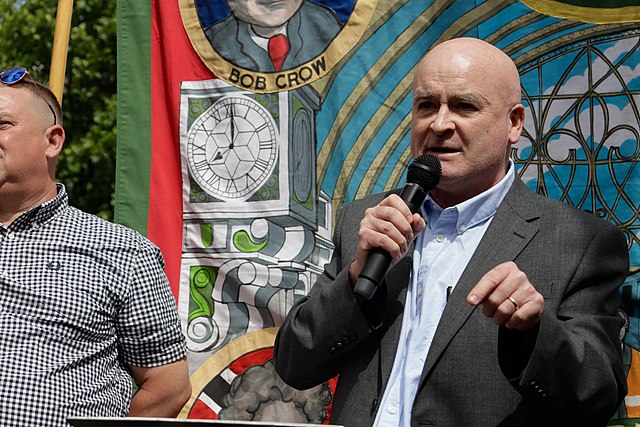
To understand the limits to the action, we need to consider the nature of the unions from a Marxist perspective. Unions are not homogenous organisations. In any sufficiently stable capitalist society, they tend to develop a layer of officials outside of the workplace. These form the basis for a union bureaucracy whose social function is to negotiate the terms of exploitation of workers.
As Rosa Luxemburg pointed out over a century ago: “The specialisation of professional activity as trade union leaders, as well as the naturally restricted horizon which is bound up with disconnected economic struggles in a peaceful period, leads only too easily to bureaucratism and a certain narrowness of outlook.” The bureaucracy’s is not directly subject to the pressure of either capital or rank-and-file workers. Its key social function is to negotiate, to strike deals, indeed its power reflects its ability to do so. This is reinforced by the material conditions of the bureaucracy. If workers are sacked or face a pay cut, the bureaucrat does not lose their job or pay.
To the extent that workers move into struggle, they tend to experience the bureaucracy as a conservative force. That is not say that it is purely conservative. To exist at all, the bureaucracy must give some expression to discontent among union members, and it must protect the capacity of the union bureaucracy to negotiate with employers. But the bureaucracy generally seeks to keep any confrontation emerging from this within tight limits. Actual class struggle, driven from below, can become an unwanted interruption to negotiation, and a potential threat to union funds.
The hold of the bureaucracy is reinforced by the increasingly harsh legal framework for industrial action in many countries. It is also reinforced by defeats that reduce the self-confidence of rank-and-file workers, such as those experienced by workers in Britain from the late 1970s onwards. The big victories for the British working class, in the period around the First World War and in 1968- 1974, largely took the form of unofficial action driven by networks of rank-and-file union representatives (generally known as “shop stewards”) based in the workplace.
Of course, the situation is rarely as simple as a thin crust of conservative officials and a seething mass of radicalised rank-and-file workers. There are more conservative or passive workers among the union’s membership. That is why electronic surveys of members are today a preferred tool of union bureaucracies: they individualise members, giving equal weight to those scabbing on industrial action as to those organising and driving it. Conversely, Marxists prefer votes on picket lines or at union mass meetings, occasions that involve the collective mobilisation of members.
The bureaucracy will often seek to win active support for their approach among the union rank and file. For left-wing sections of the bureaucracy, Jane McAlevey’s work on trade union organising is particularly attractive in doing so. In the UCU, arguments drawn from her work have been widely used to undermine more radical strategies. For instance, Grady recently promoted an interview in which McAlevey claims that, before you can organise a strike, you must already have 90 percent of workers in support through a prior process of organisation. If this argument, for so-called “supermajority strikes” is taken literally, it is a very poor one. There have been plenty of successful strikes in Britain with far less support than this. Few ballots even approach a 90 percent turnout, let alone winning support for strikes from 90 percent of those eligible to vote, particularly in national disputes.
In a similar vein, the UCU’s general secretary at one stage argued that, rather than taking strike action, we should engage in a process of organisation, so that, at some point in the future, we could have sufficient union density to mobilise effectively. However, it is hard to see why people would be won to the union on the back of a devastating defeat on pay. That is not, historically, how unions have grown or deepened their organisational roots: they expand through successful struggle, rather than “organising” in the abstract. Of course, such action needs to have some chance of success, but in the kind of approach advocated by McAlevey the bar is set far too high, and it neglects the potential for groups of workers stopping short of a so-called “supermajority” can fight and win, inspiring others to start to organise.
It has been pointed out that McAlevey’s work, which contains many sensible points about organising that would be uncontentious for Marxists, is misused by the union bureaucracy. If so, she surely has some responsibility to challenge such misrepresentation from those to whom she offers her services as a consultant. Moreover, it is a theoretical limitation in her own account that licenses the use to which the work is put. Specifically, while she is rightly scathing about the drive towards partnership between unions and employers, and critical of “oligarchic” and antidemocratic tendencies in the unions, the problem of the union bureaucracy in general plays no role in her work. This allows an approach whereby the problem of bad bureaucracy is solved by better bureaucracy.
This matters because, while there are indeed important tensions within the union bureaucracy, the fault-line dividing the bureaucracy as a whole from the rank and file is of more fundamental importance. This point is harder to see at moments in which workers are relatively passive, but it becomes clearer as workers move into struggle.
So, it does matter that RMT leader Lynch publicly lambasts the government and employers, as this can increase the confidence among workers to fight. Yet this rhetorical radicalism has not yet translated into a breakthrough in the rail industry. Grady was herself elected as part of a reaction against her more right-wing predecessor in the UCU, Sally Hunt, but has reverted to markedly similar practices as union leader. Conversely, unions were able to win major victories in the early 1970s under right-wing union leaders but could suffer terrible defeats in the late 1970s and in the early 1980s under more left-wing leaders. For instance, one of the greatest victories for coal miners in Britain took place in the 1972 strike, under Joe Gormley, later Baron Gormley, who was, at the time holding secret meetings with the Conservative prime minister, and who passed information about radicals in his own union to the police. Coal miners suffered their greatest defeat in the 1984-85 strike under the left-wing firebrand Arthur Scargill.
McAlevey often uses the example of the split between the CIO and the much more conservative AFL unions in the US in the 1930s. Again, the different between them was significant. However, the split in the bureaucracy that allowed the formation of the CIO was a response to a series of militant class confrontations in 1934, driven by rank-and-file workers, often with the help of anti-Stalinist socialist militants. The CIO leaders did organise in a more militant manner than their counterparts in the AFL and did use strikes to build their unions. However, by the late 1930s, CIO leader John L Lewis, would seek to rein in the wave of action, telling bosses: “a CIO contract is adequate protection for any employer against sit-ins, lie-downs or any other kind of strike”[See John Newsinger, Fighting Back: The American Working Class in the 1930s (Bookmarks).]
This criticism of the role of the bureaucracy as a whole should not be confused with a passive, sectarian approach to unions or even their leaders. Marxists often seek to involve union leaders in joint activity and campaigns, to encourage them to mobilise their members to fight fascism or impose imperialist wars. However, it is profound mistake to believe that revolutionaries who are drawn into the union bureaucracy, or sell their services to it, are immune from the pressures inherent in these roles. As Marx puts it: “It is not consciousness of [people] that determines their being, but, on the contrary, their social being that determines their consciousness.” Marxists require an organisational alternative to reliance on the vacillating union bureaucracy.
The rank-and-file
That alternative must start from the potential of the union rank and file. The self-confidence of the rank and file stands in inverse relation to the power of the bureaucracy. In some earlier periods this was far higher than it is in most contexts today. As Tony Cliff wrote:
“Between the two wars and after the Second World War, the major unions were headed by right-wing leaders… However, the fact that they collaborated with employers and the state did not bring them into actual conflict with the rank and file in the majority of cases… Usually, management retreated under the duress of a short-lived strike, that is, before the trade union bureaucracy managed to intervene and discipline the workers… In many cases, a central element in the tactics of the militant was to win the strike before trade union headquarters heard about it”.
Sometimes this can take organised form. Historically, rank-and-file organisations emerged at high points in workers’ struggle, seeking to hold the bureaucracy to account and to act independently when necessary. Their approach was summed up well in the first leaflet issued in 1915 in Glasgow by one such organisation, the Clyde Workers’ Committee: “We will support the officials just so long as they rightly represent the workers, but we will act independently immediately they misrepresent them… [W]e claim to represent the true feeling of the workers. We can act immediately according to the merits of the case and the desire of the rank and file.”
Where such organisation exists, a rank-and-file strategy becomes possible, in which Marxists seek to weave these organisations into a coherent rank-and-file movement. Marxists are in a prime position to contribute to these efforts because we reject the logic of capitalist society and aspire to lead revolutionary change driven by workers. As such we can offer a counterpressure to the tendency of rank-and-file organisation to succumb to reformist pressures. In the past this has tended to be expressed through sectionalism—ie promoting the interests of one group of workers against others—or through the organisation subordinating itself to left sections of the bureaucracy.
In many countries today we remain a long way from the creation of a rank-and-file movement. Rank and file workers in Britain typically lack the confidence to act independently of the bureaucracy. There have been some instances of unofficial action—for instance a wave of strikes on oil and gas rigs in the North Sea last year and walkouts at Amazon depots. At the time being, though, most action consists, and will continue to consist, of large-scale official strikes under the leadership of the bureaucracy.
Nonetheless, as strike action develops, the tension between rank-and-file workers and the bureaucracy tends to grow—as is happening at present. As noted above, in the UCU there has been some counter-pressure to the attempts to shut down and limit the action, sometimes successful. Marxists have played an important role in galvanising this resistance. Although UCU is hardly the most significant union, in terms of its size or social weight, it is seeing some of the most intense and persistent debate. In less developed form, though, the discontent is expressed elsewhere. In the RCN, the main nursing union, an attempt to shut down their struggle was overcome by a huge vote—driven by networks of activists within the union who rejected the deal. A similar process has taken place in the postal service, where the leadership of the CWU presented a dreadful deal to members, claiming it as a success—before cancelling the ballot amid considerable unease within the rank and file.
While we cannot skip stages of development and leap to a rank-and-file movement, we can, in such instances, aspire to use the officially sanctioned action to build embryonic networks of rank-and-file militants, to politicise them, and to coordinate these efforts between unions.
The role of Marxists
Creating these embryonic networks requires that we do two things.
First, winning rank and file workers to our position means not simply that we build struggles when they are rising. We must also expose the limitations of the union leaders and the union bureaucracy, criticising them when they try to shut down struggles or push through poor deals. When they sell workers out, we should say so. We must explain to workers why struggles fail, why one-day strikes are not sufficient, and so on. Otherwise, the only conclusion workers can draw is cynicism about their fellow union members. Marxists do not always win the argument. Often, if there is no sense that a real fight is possible, union members will accept a poor deal. But it remains right to argue that more could be achieved through collective struggle. Even if we begin as a minority on this point, workers can learn from their experience—as they are beginning to do in Britain.
Second, Marxists must connect these efforts to build an embryonic rank and file with our wider politics—involving struggle against every aspect of capitalism and the oppression it brings about. This is clear from the example of France, where the colossal strike movement has not removed the threat posed by the far right, exemplified by Marine Le Pen and her Rassemblement National. Similarly in Britain, the uptick in strike action comes alongside renewed efforts to scapegoat refugees crossing the English Channel in small boats. Taking up such political arguments is not a distraction from the economic struggle; it is a crucial element in defending the overall interests of workers.
This is the second part of a speech Joseph should have given at the Marxismuss conference in Berlin before he was unfortunately taken ill. Reproduced with permission. You can read part 1 here.